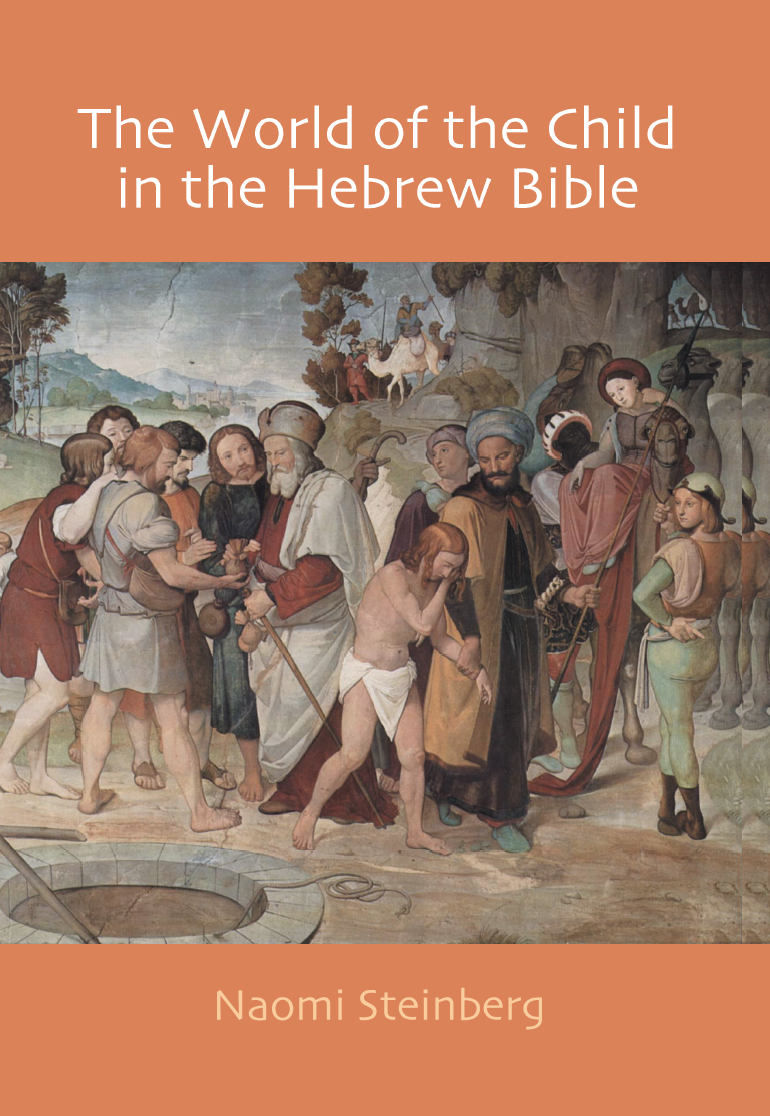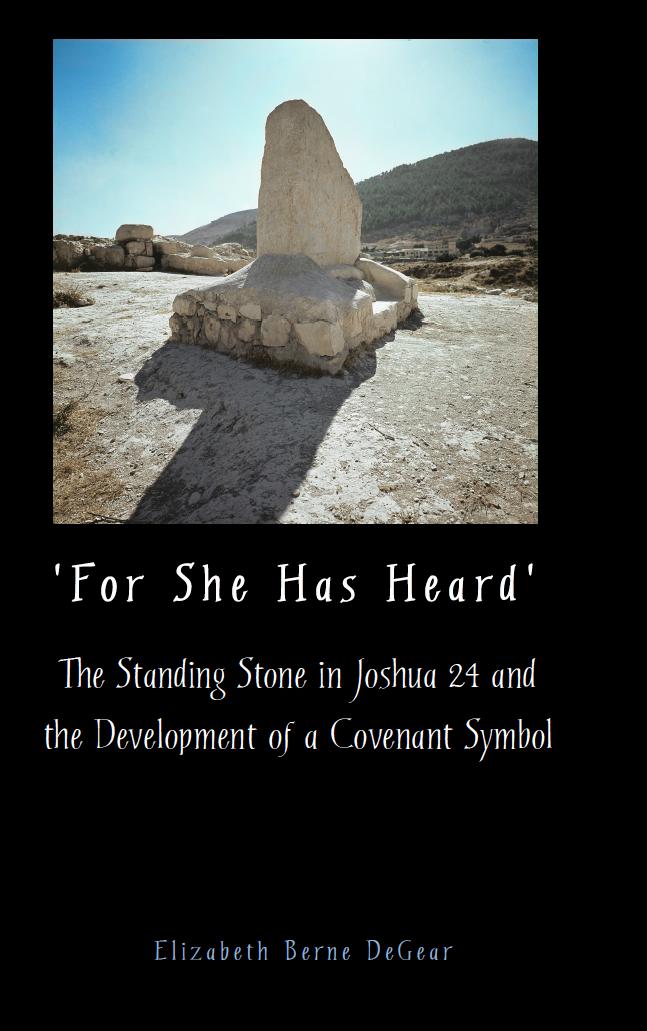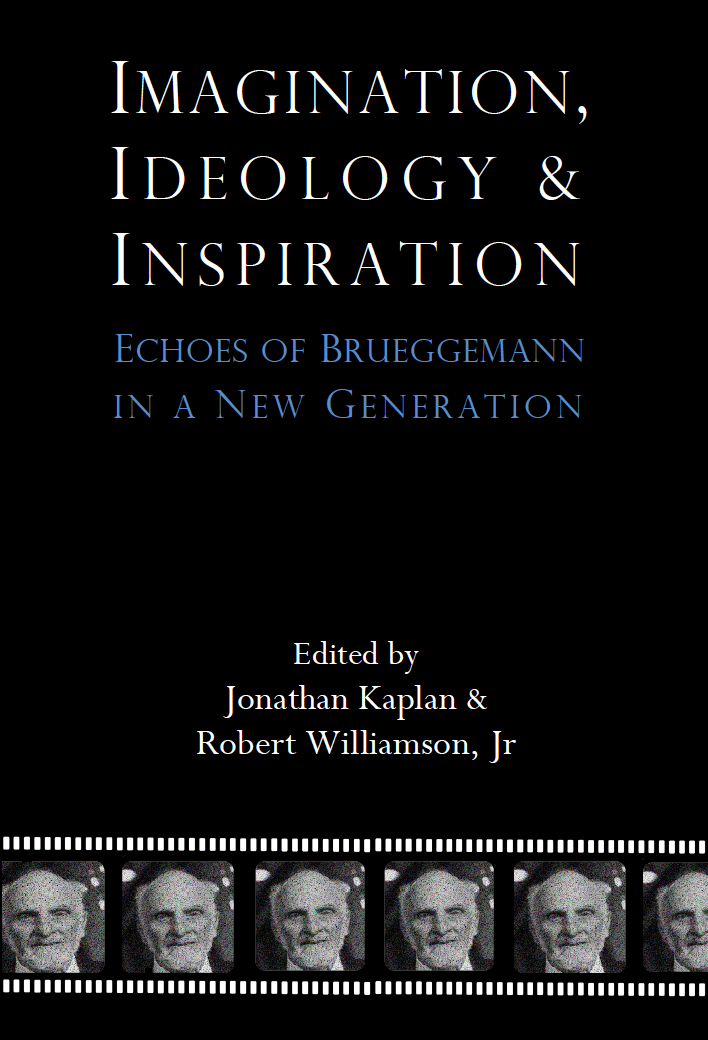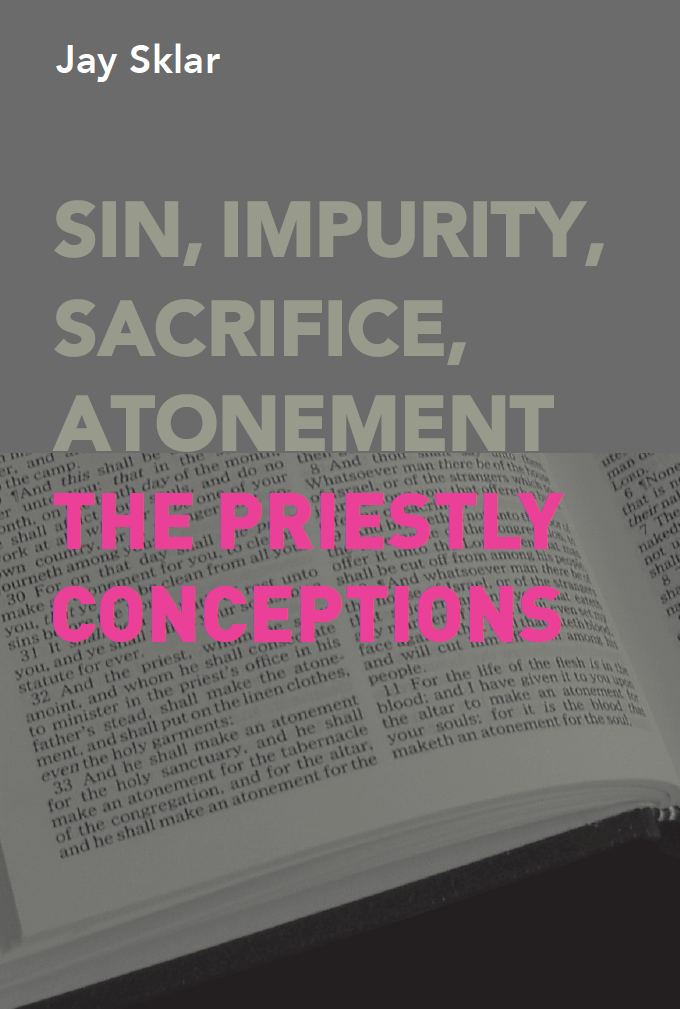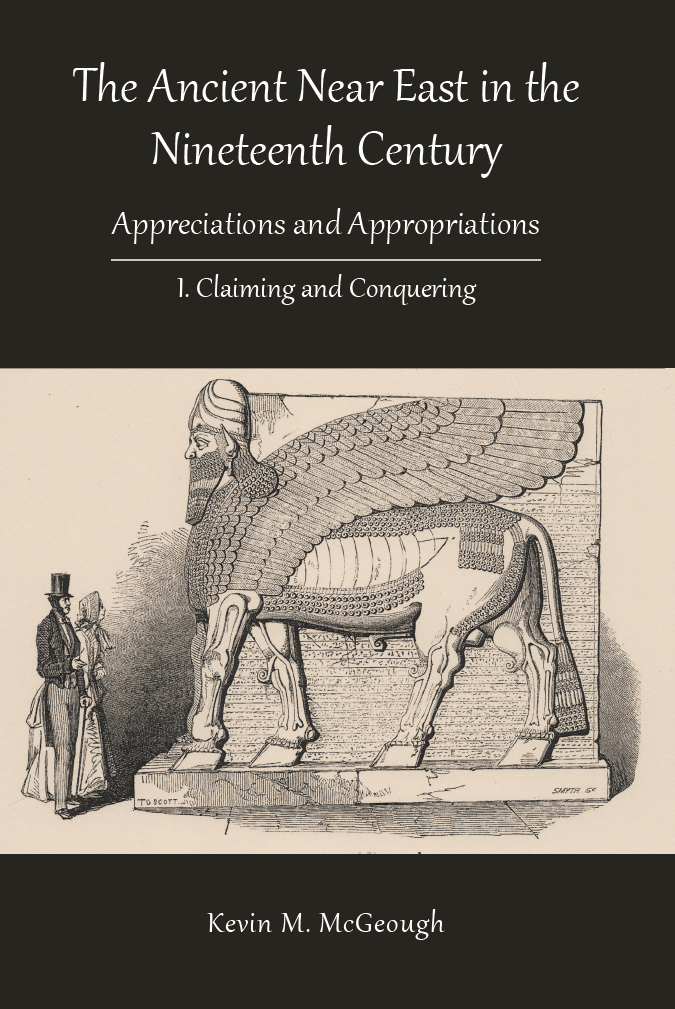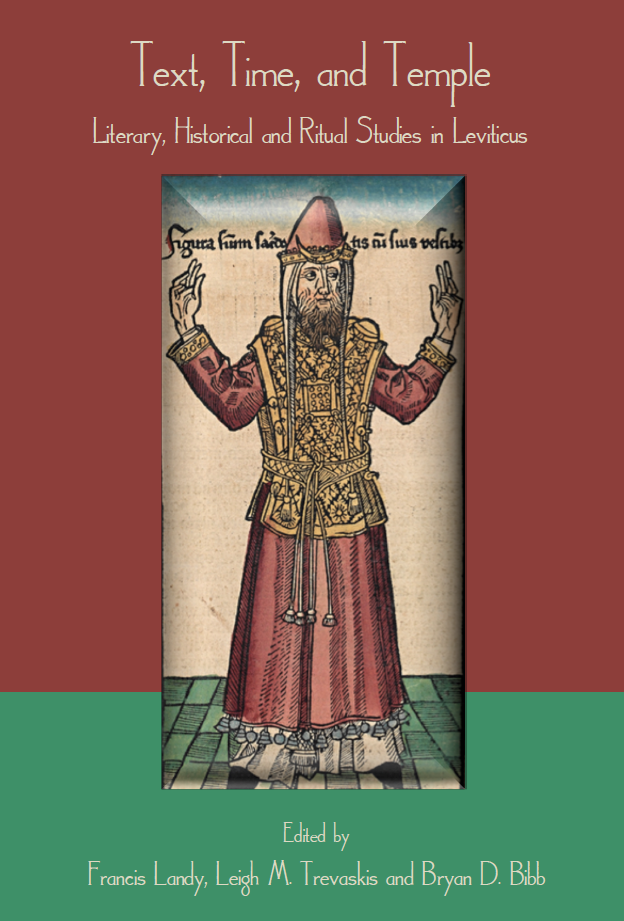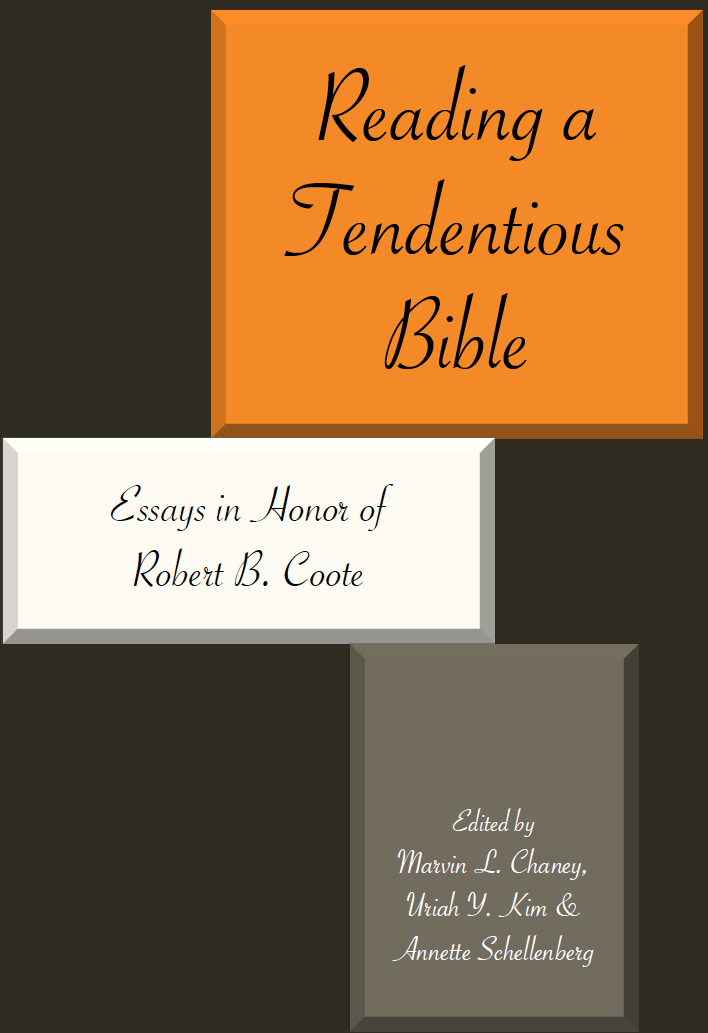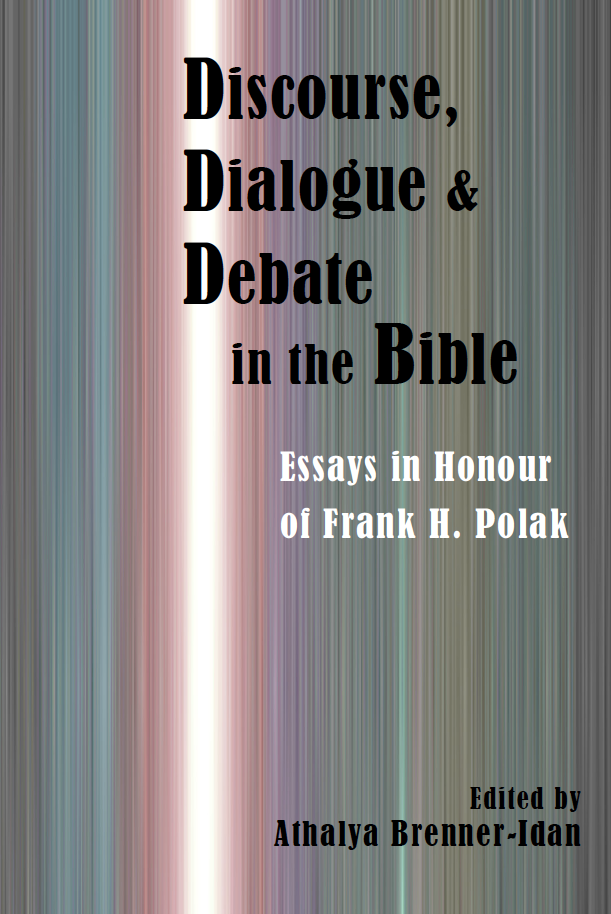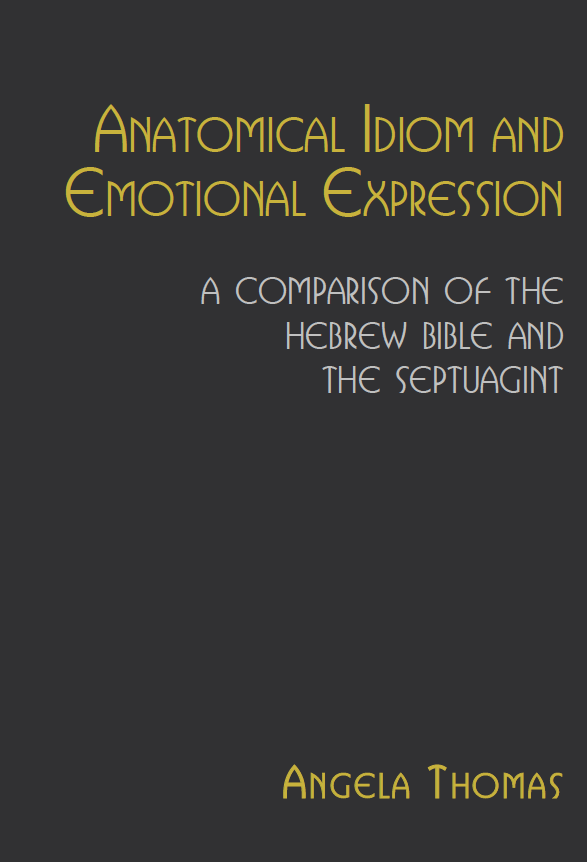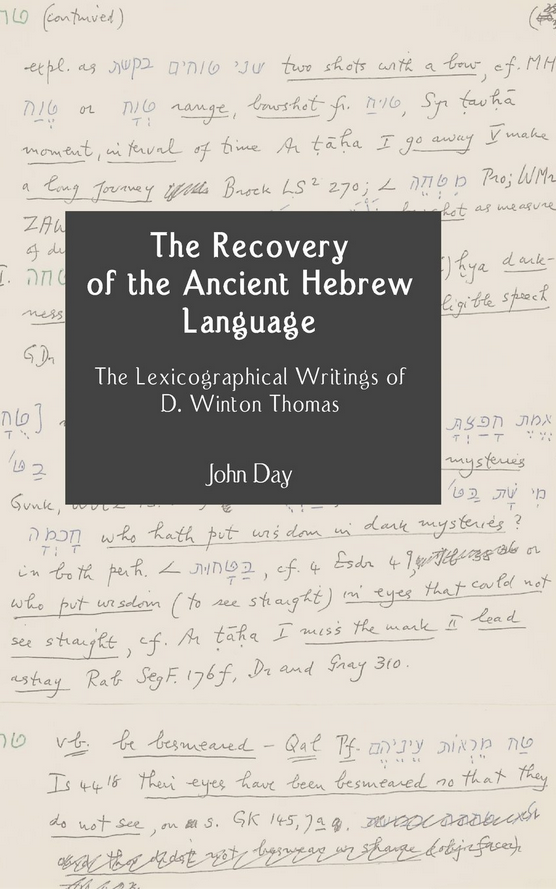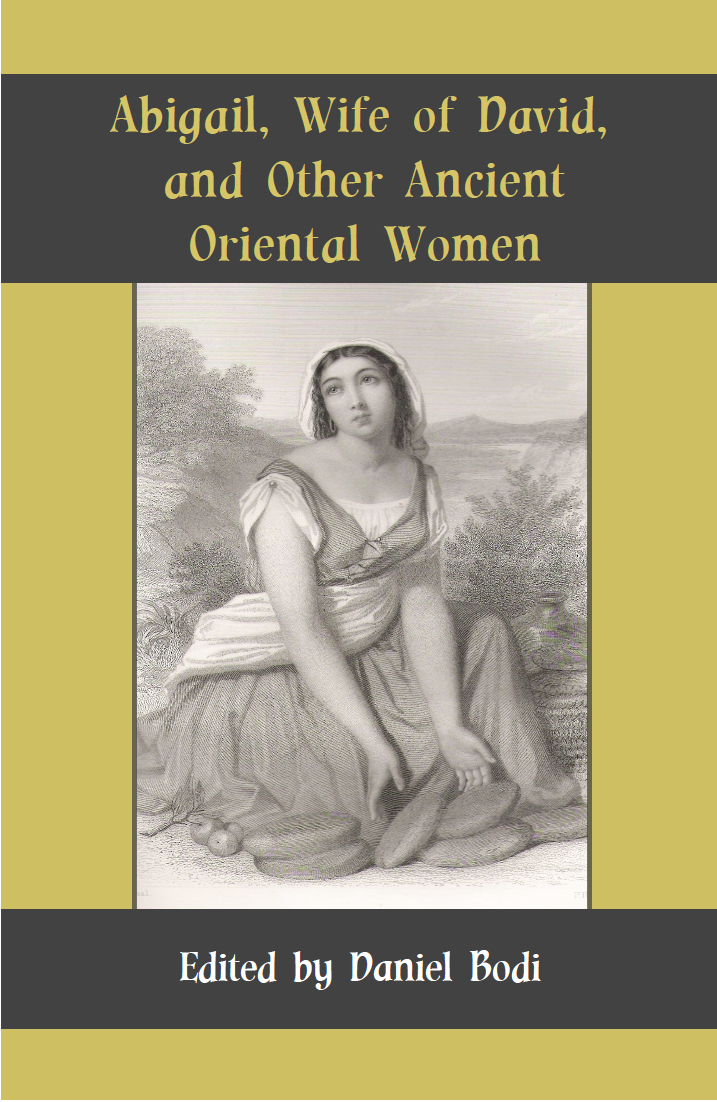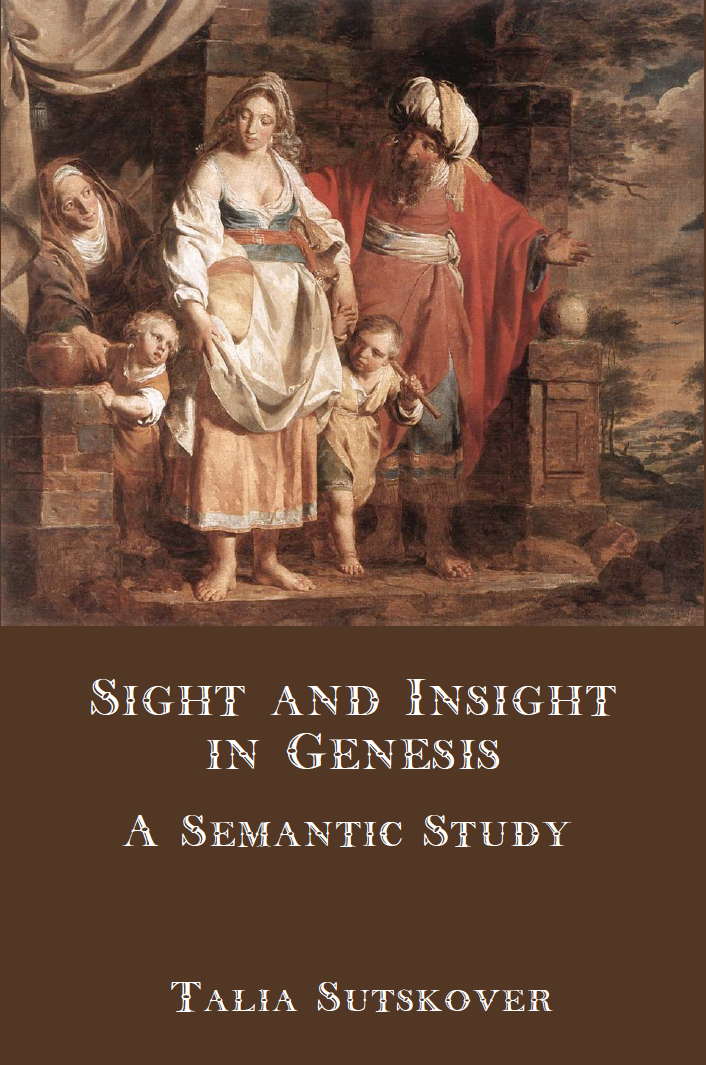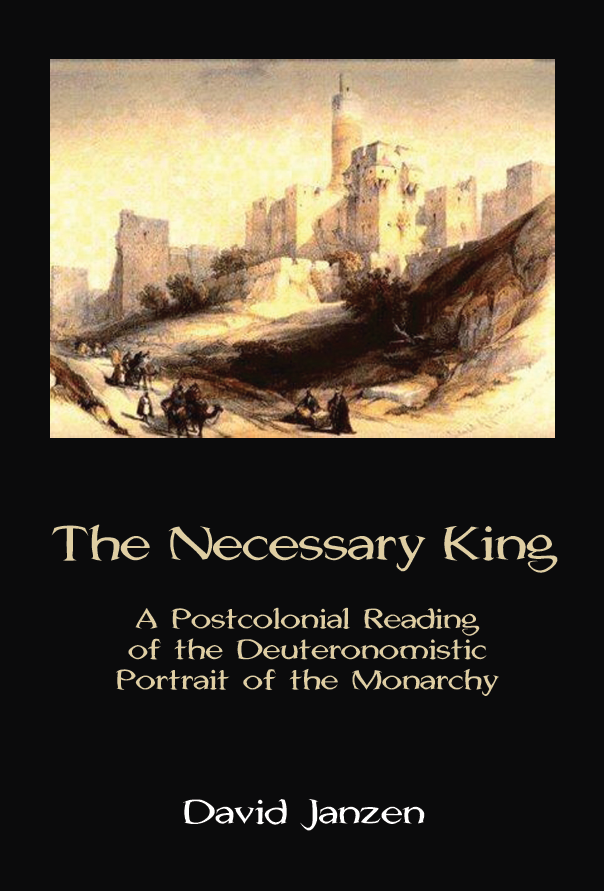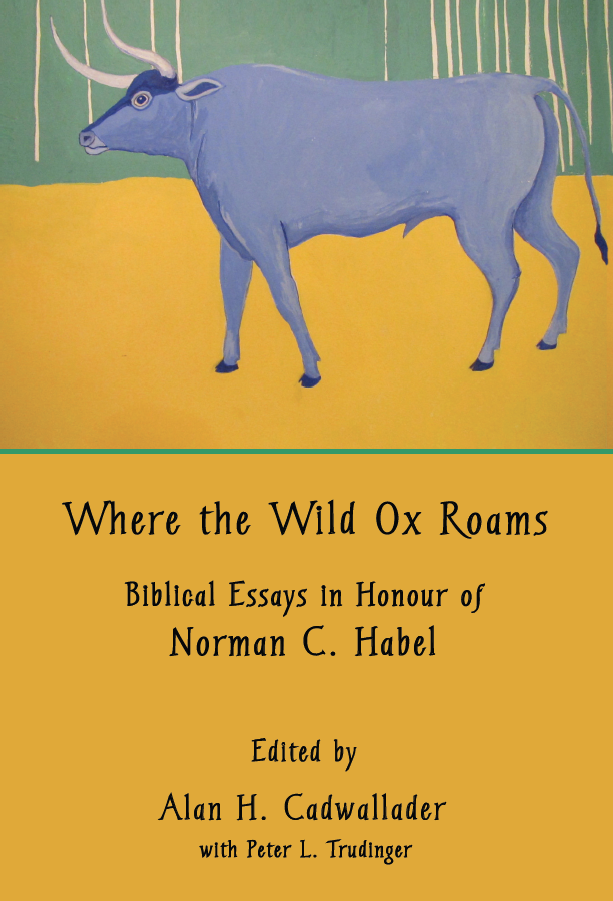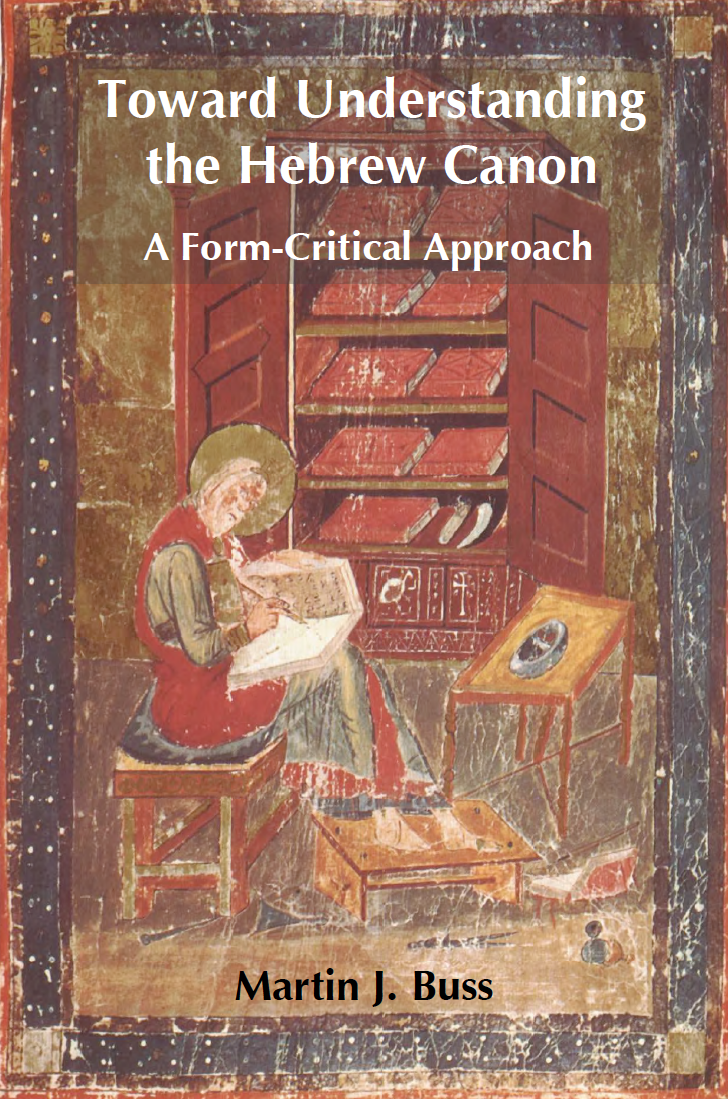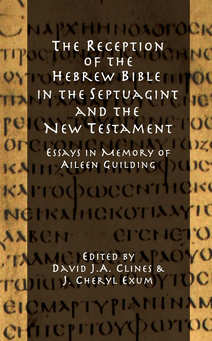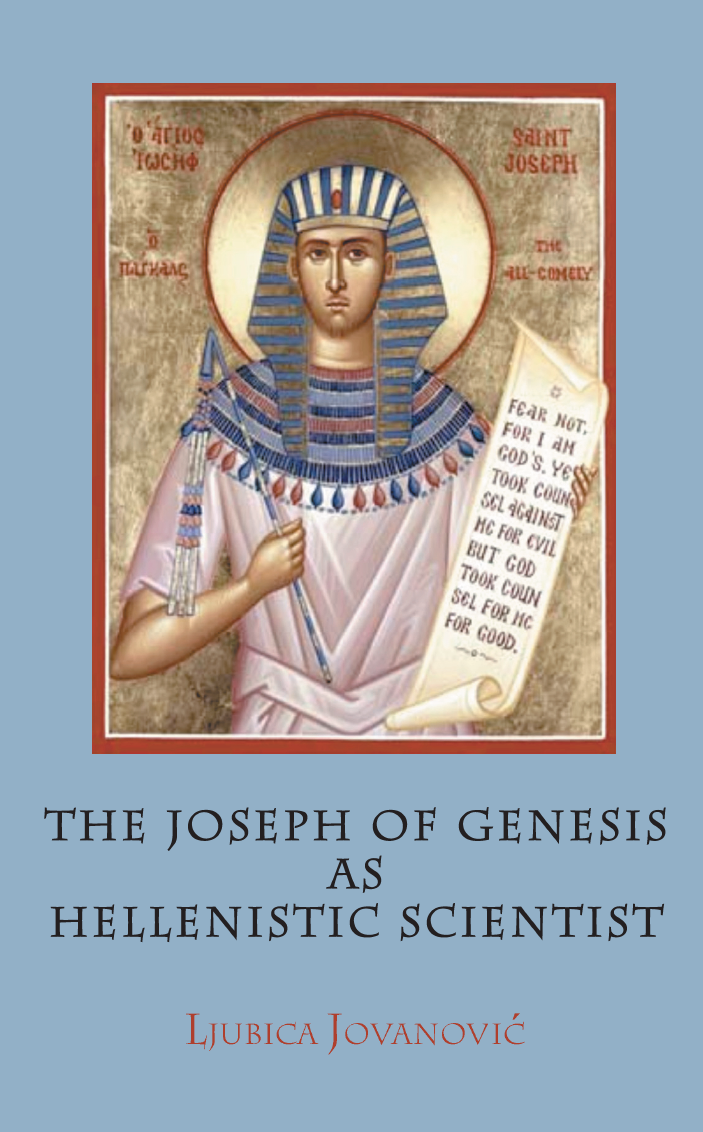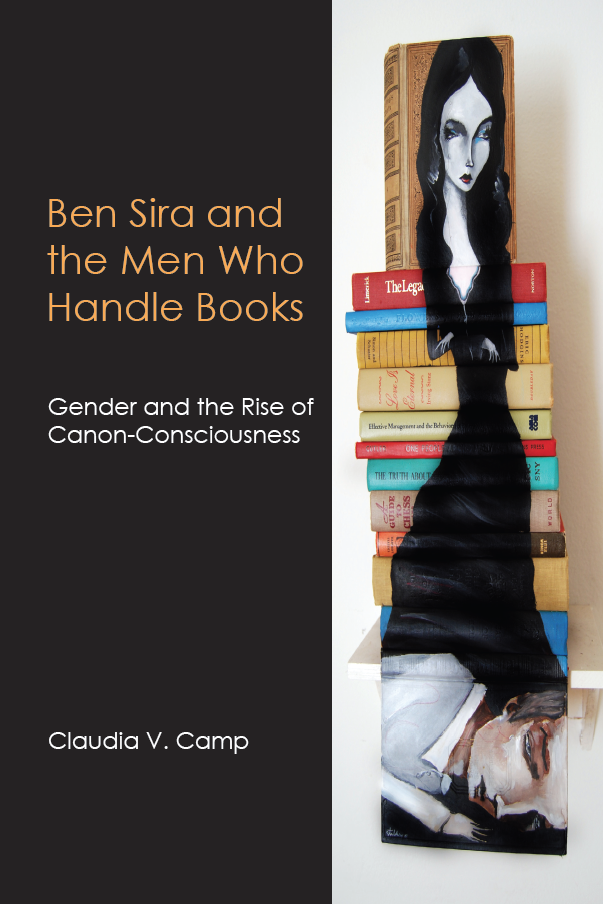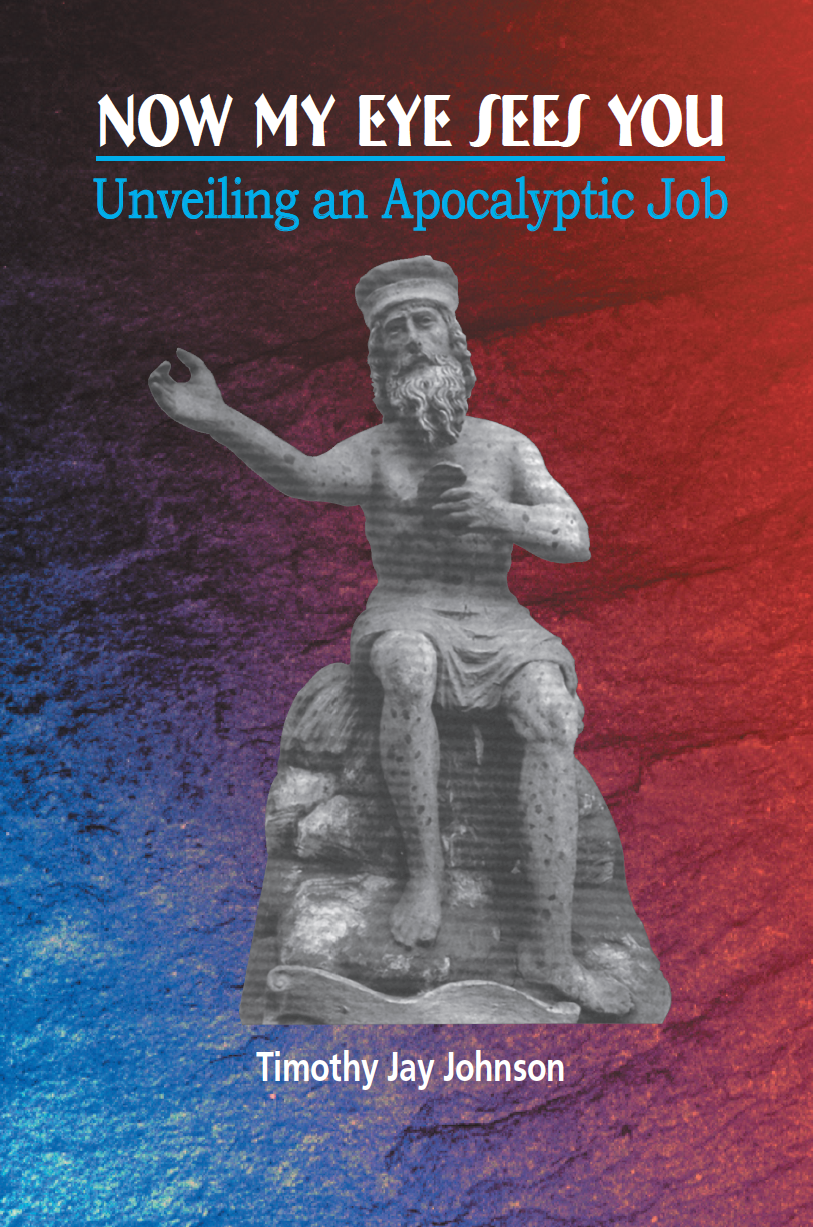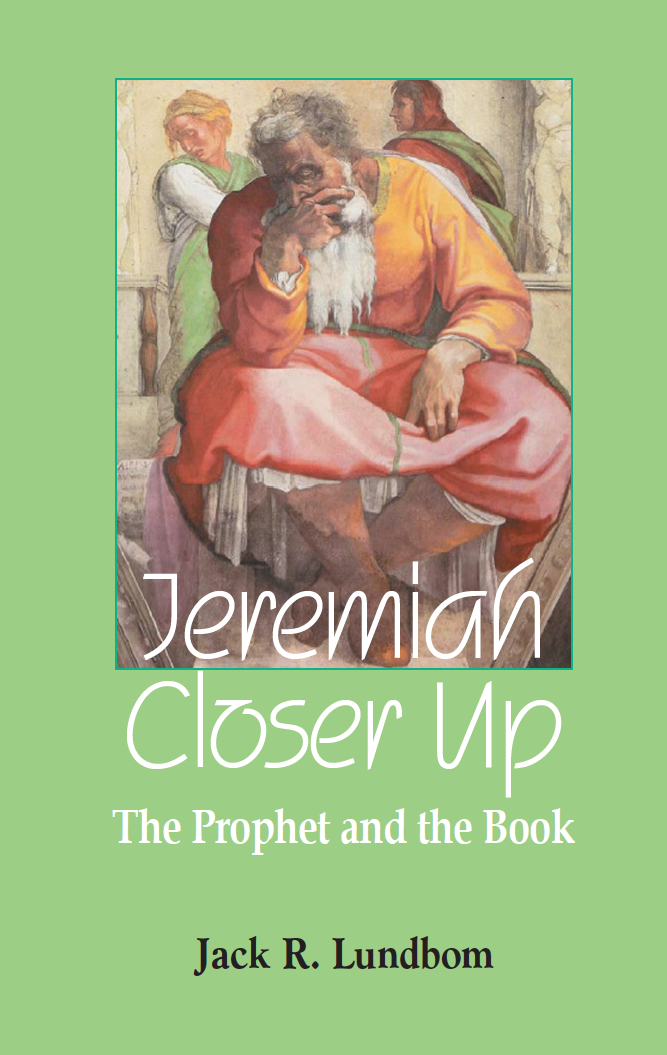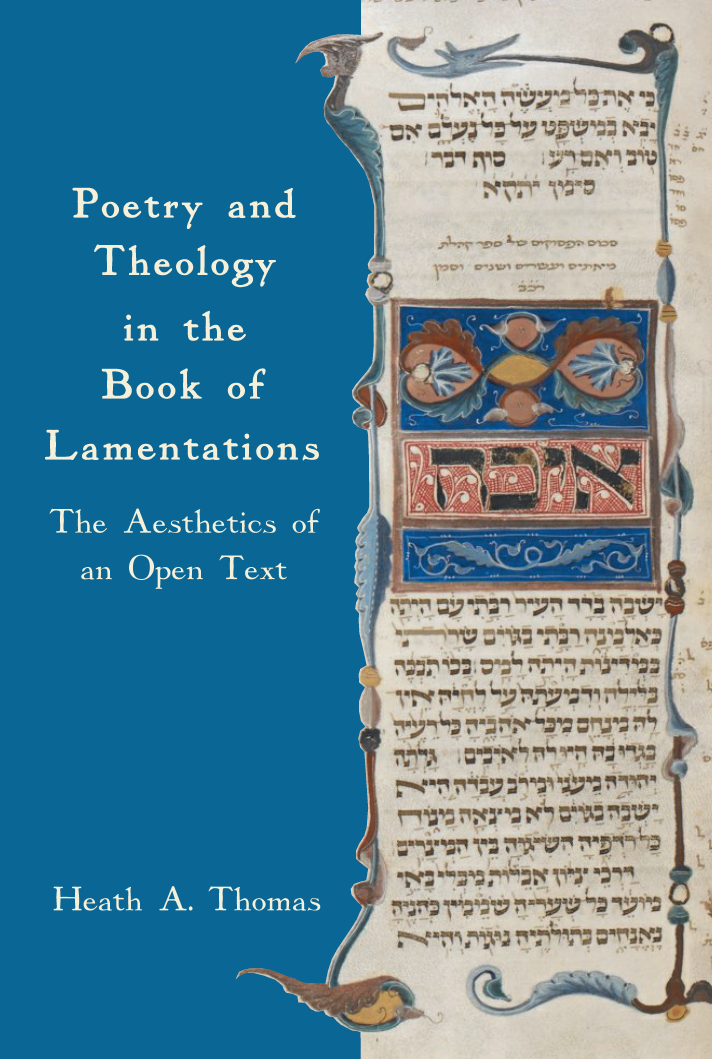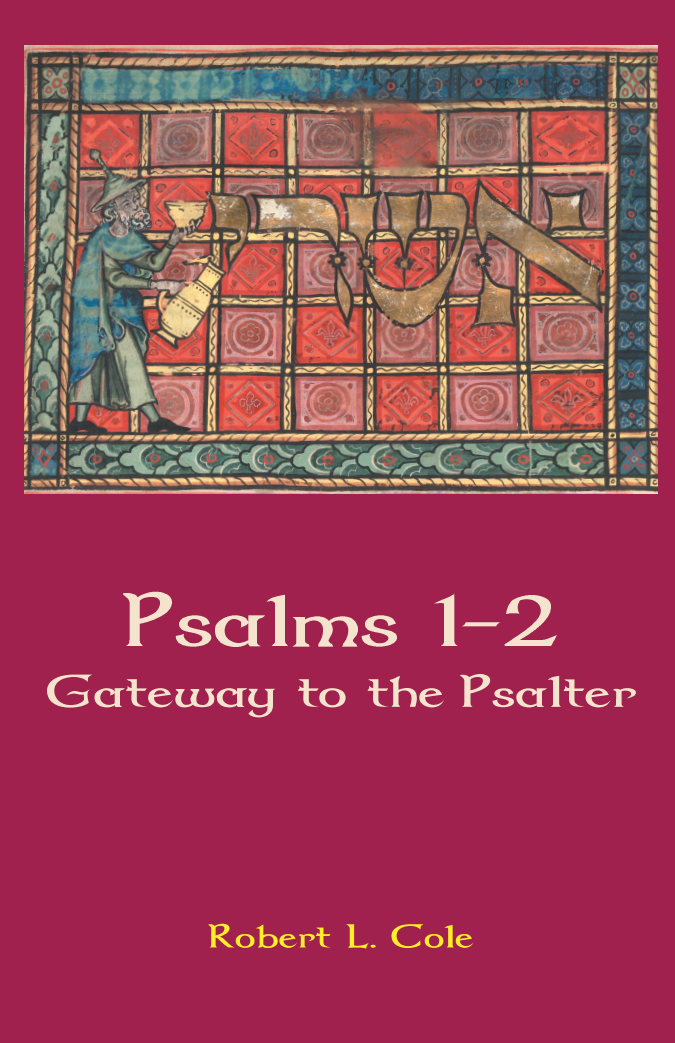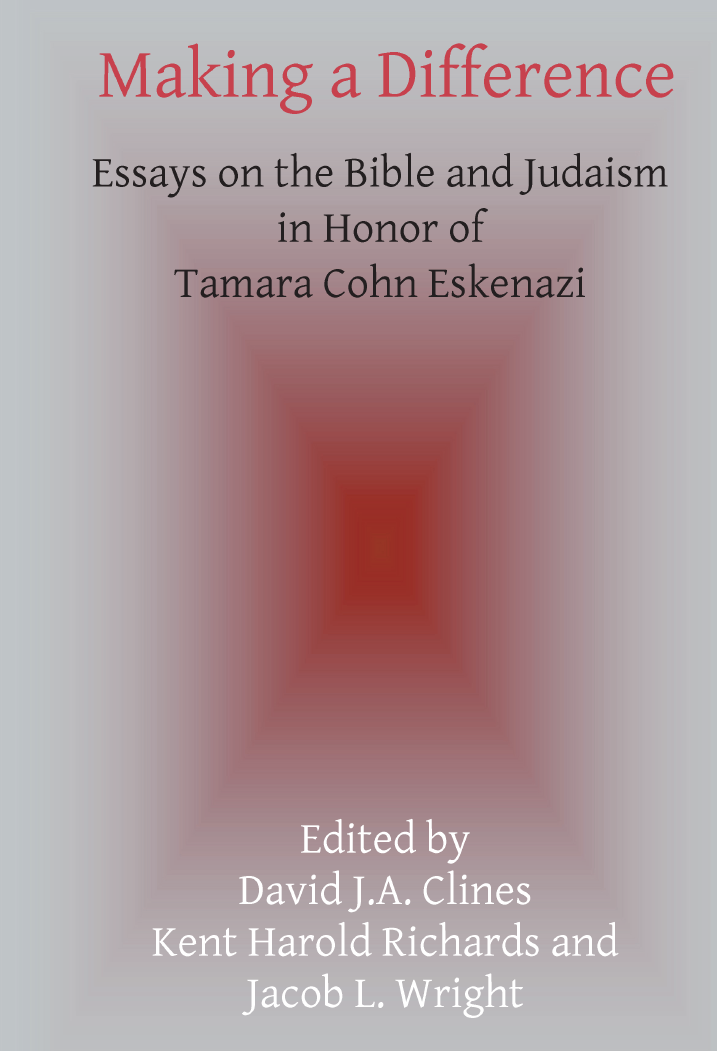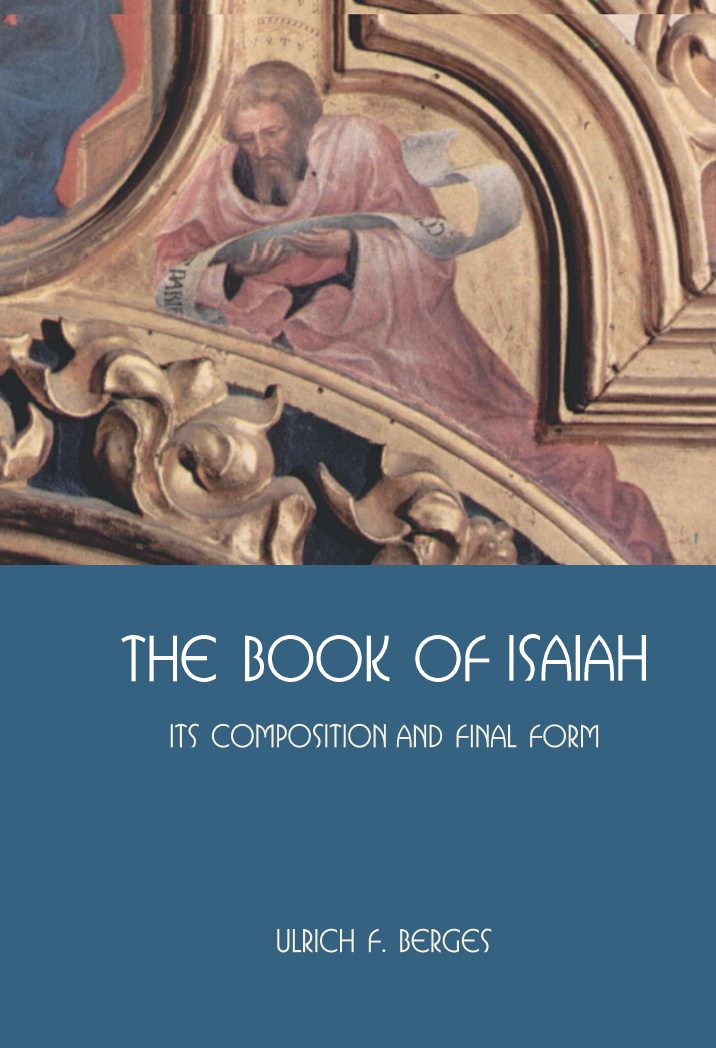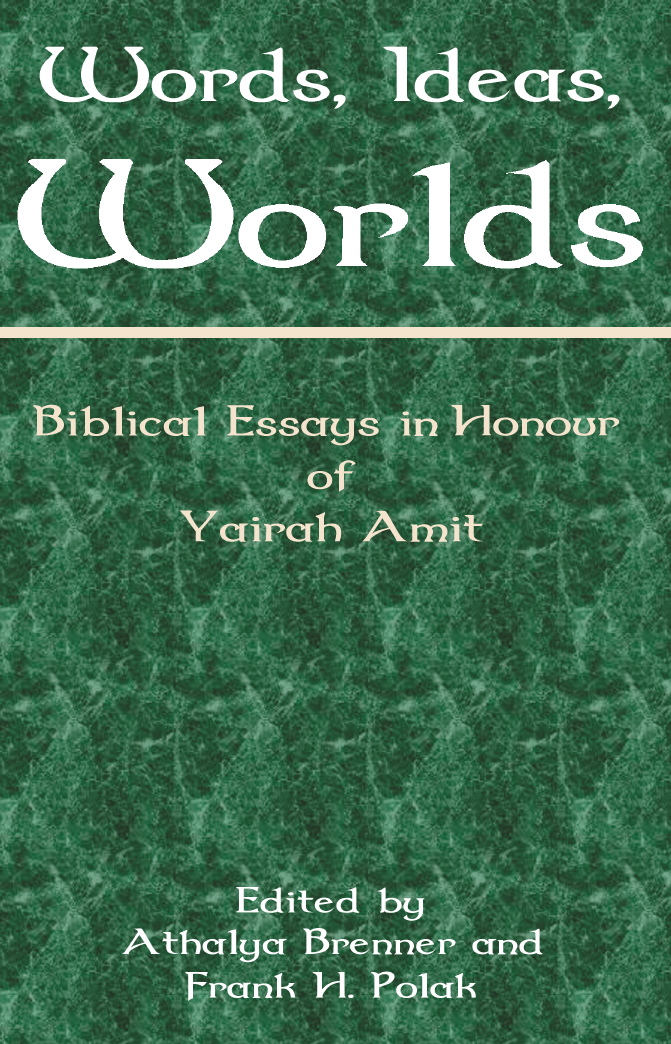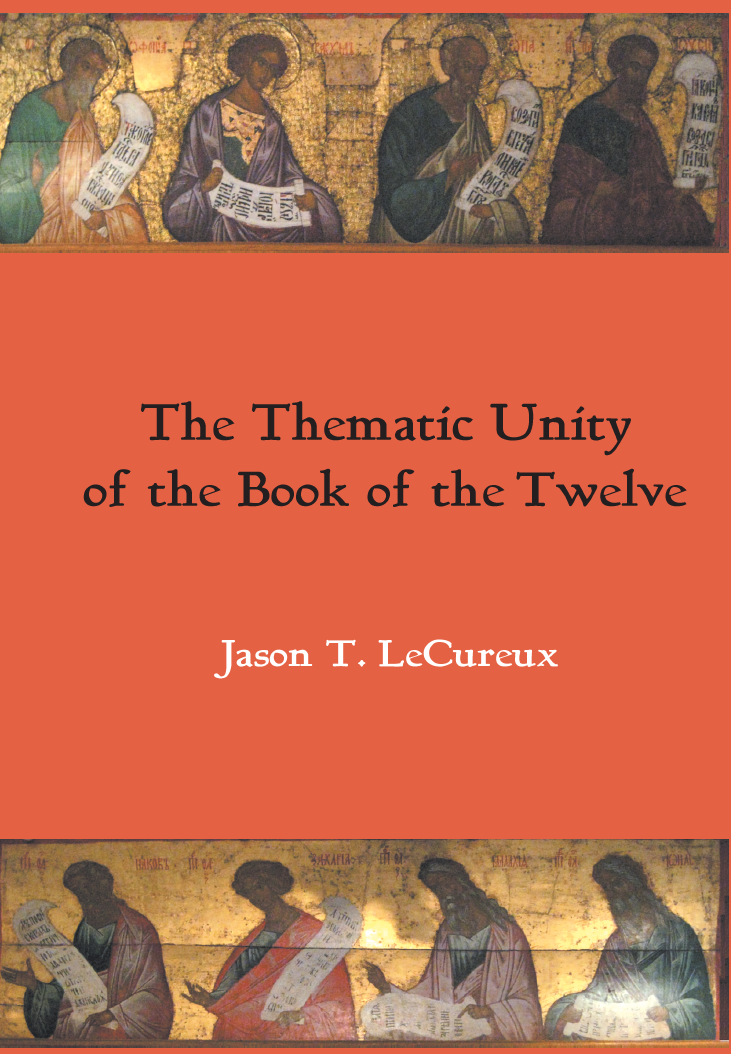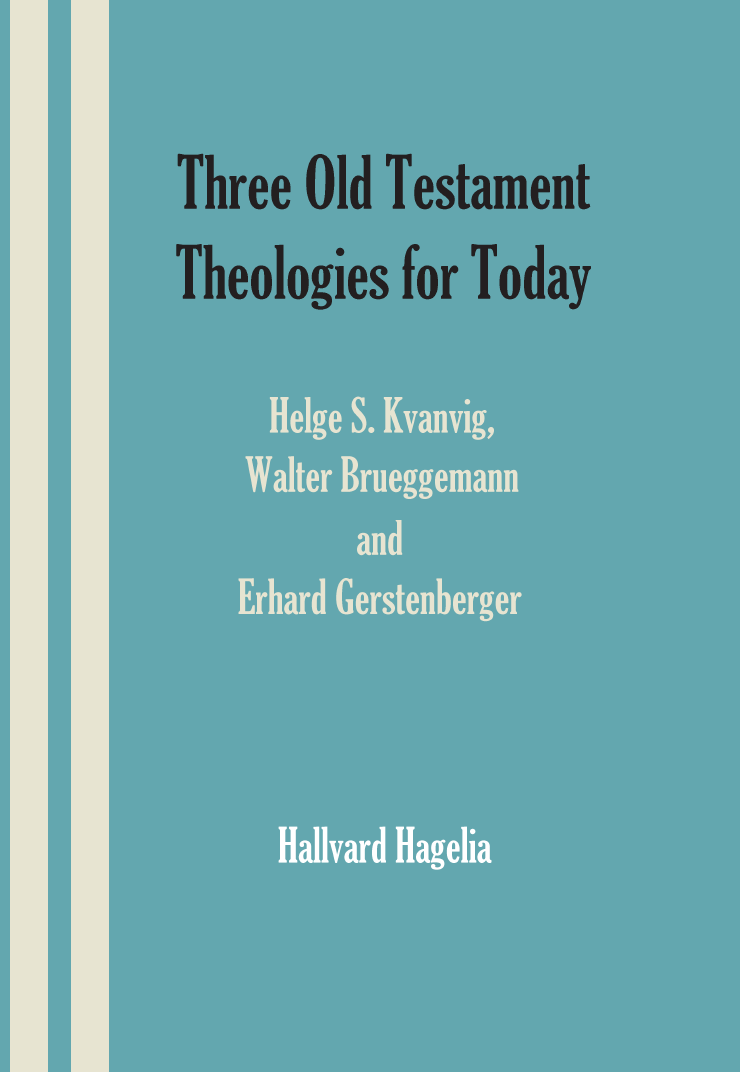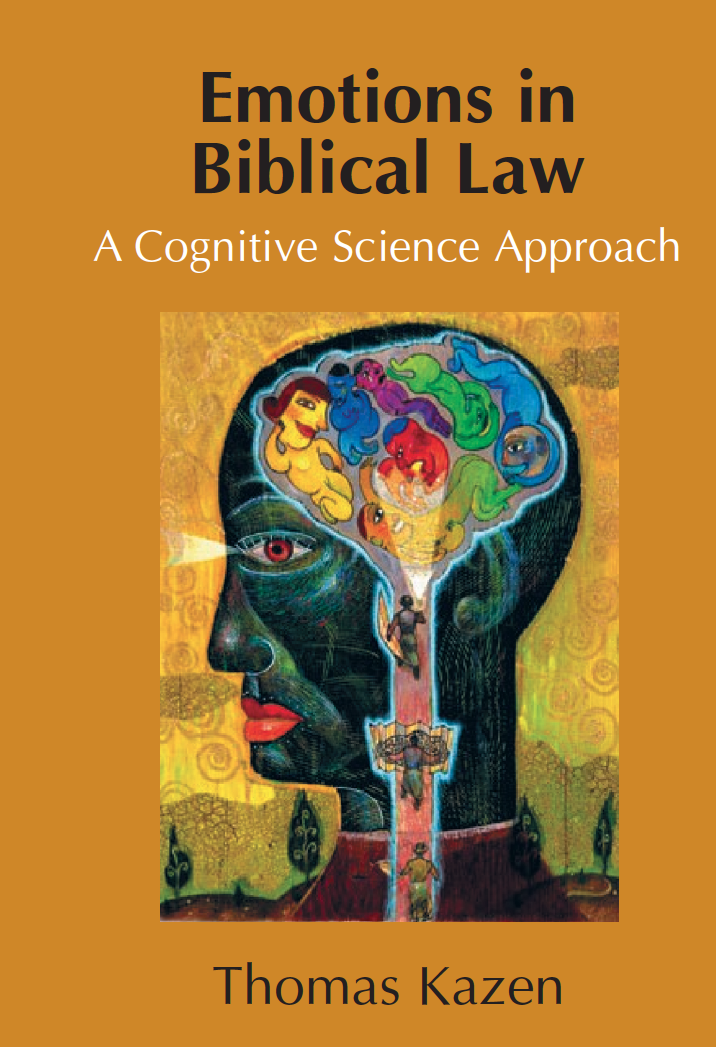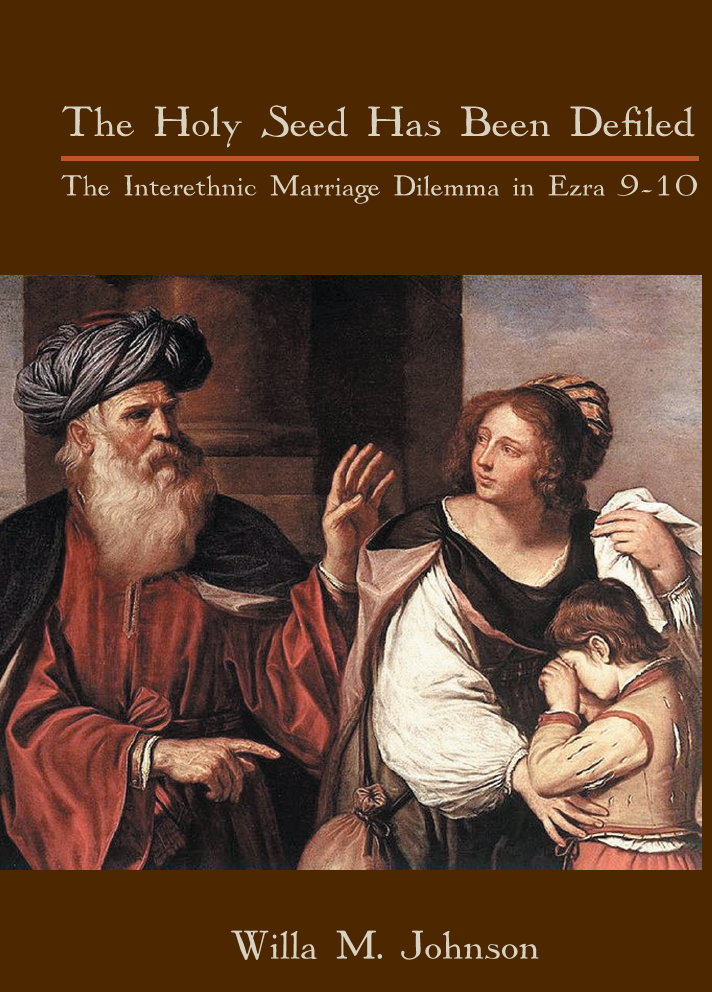Biblical Rhetoric and Rhetorical Criticism
Published: Oct 2015
£20.00 – £80.00
This volume will prove a classic textbook on rhetorical criticism in the Bible, especially the Hebrew Bible. Following the lead of the famous Presidential Address to the Society of Biblical Literature in 1968 by James Muilenburg, 'Form Criticism and Beyond', Jack Lundbom has for over 40 years been developing and shaping the field with a stream of papers. 26 of them (three not previously published) are gathered into this volume.
Hebrew rhetoric has a long history, reaching back even into the early Israelite period. Recognition of rhetorical elements in the Bible can be seen in Hillel, Augustine, ibn Ezra, and Calvin, as well as among certain biblical scholars of the 18th and 19th centuries. But the revival of rhetoric and the modern method of rhetorical criticism is more recent, having begun in America among classical scholars in the early 1900s, and having been widely adopted by biblical scholars in the last third of the twentieth century. Biblical scholars today invariably have rhetorical criticism in their exegetical toolbox, but the field lacks such a comprehensive corpus of studies as the present volume supplies.
Reading the Bible with an eye to the rhetorical nature of its discourse —not just the style, but its structures and modes of argumentation —gives one a sharpened view of biblical figures, their legacy, and much else in the biblical text. One also gets new insight into the audiences for whom biblical messages were originally intended. Rhetorical criticism offers a ready yield for all those seeking a closer understanding of the biblical texts.
Biblical Rhetoric and Rhetorical Criticism
£20.00 – £80.00
This volume will prove a classic textbook on rhetorical criticism in the Bible, especially the Hebrew Bible. Following the lead of the famous Presidential Address to the Society of Biblical Literature in 1968 by James Muilenburg, 'Form Criticism and Beyond', Jack Lundbom has for over 40 years been developing and shaping the field with a stream of papers. 26 of them (three not previously published) are gathered into this volume.
Hebrew rhetoric has a long history, reaching back even into the early Israelite period. Recognition of rhetorical elements in the Bible can be seen in Hillel, Augustine, ibn Ezra, and Calvin, as well as among certain biblical scholars of the 18th and 19th centuries. But the revival of rhetoric and the modern method of rhetorical criticism is more recent, having begun in America among classical scholars in the early 1900s, and having been widely adopted by biblical scholars in the last third of the twentieth century. Biblical scholars today invariably have rhetorical criticism in their exegetical toolbox, but the field lacks such a comprehensive corpus of studies as the present volume supplies.
Reading the Bible with an eye to the rhetorical nature of its discourse —not just the style, but its structures and modes of argumentation —gives one a sharpened view of biblical figures, their legacy, and much else in the biblical text. One also gets new insight into the audiences for whom biblical messages were originally intended. Rhetorical criticism offers a ready yield for all those seeking a closer understanding of the biblical texts.
The World of the Child in the Hebrew Bible
Published: Oct 2015
£18.50 – £50.00
The question 'What is a child?' is not easily answered. To make us aware of the multiple factors that contribute to the social construction of childhood in the Hebrew Bible, Naomi Steinberg draws on ethno-historical evidence and incorporates the insights of contemporary social studies of childhood. Through close readings of Genesis 21, 1 Samuel 1 and Exodus 21.22-25, she argues that chronological age and biological immaturity do not determine the boundaries of childhood in biblical Israel.
The social constructions of childhood in the Hebrew Bible were based on what the child could do for the parent, not vice versa. Children were their parents' property and were used to fulfil their parents' desires and needs. Not all children had the same experiences of childhood, of course. For example, whether a child was born into a monogamous or polygamous family shaped the course of its future. Other relevant factors in the construction of the multiplicities of childhoods included gender, birth order, and the socio-political historical contexts of ancient Israel. Steinberg convincingly corrects the notion that childhood is a static category in the human life cycle, showing that meanings of childhood are not generic and cannot be carried over from one society to another.
This fascinating study, in which the author draws fruitfully on her personal cross-cultural experience of children's lives in Guatemala, exposes the reality that childhood in the Hebrew Bible was radically different from present-day childhood.
The World of the Child in the Hebrew Bible
£18.50 – £50.00
The question 'What is a child?' is not easily answered. To make us aware of the multiple factors that contribute to the social construction of childhood in the Hebrew Bible, Naomi Steinberg draws on ethno-historical evidence and incorporates the insights of contemporary social studies of childhood. Through close readings of Genesis 21, 1 Samuel 1 and Exodus 21.22-25, she argues that chronological age and biological immaturity do not determine the boundaries of childhood in biblical Israel.
The social constructions of childhood in the Hebrew Bible were based on what the child could do for the parent, not vice versa. Children were their parents' property and were used to fulfil their parents' desires and needs. Not all children had the same experiences of childhood, of course. For example, whether a child was born into a monogamous or polygamous family shaped the course of its future. Other relevant factors in the construction of the multiplicities of childhoods included gender, birth order, and the socio-political historical contexts of ancient Israel. Steinberg convincingly corrects the notion that childhood is a static category in the human life cycle, showing that meanings of childhood are not generic and cannot be carried over from one society to another.
This fascinating study, in which the author draws fruitfully on her personal cross-cultural experience of children's lives in Guatemala, exposes the reality that childhood in the Hebrew Bible was radically different from present-day childhood.
Solomon the Lover and the Shape of the Song of Songs
Published: Sep 2015
£50.00
Reading the Song of Songs perpetually raises the question, What is this love that has been sung about so evocatively to ever new generations? The exuberance of the poetry and the remarkable history of its reception make the understanding of what the poetry is all about the more urgent for the conscientious reader.
The shape of the Song and what this shape reveals of the poet's concerns are central for this study. Hauge's analysis discloses that a special arrangement of formally independent units, signalled by effects of repetition, is typical of its composition. The strophes are set out in a fivefold pattern containing three types of passage: narrative elements, addresses to the daughters of Jerusalem, and dialogues between the lovers.
The tension of the opening scenes dedicated to Solomon and his women, contrasted with a final scene where the king is the humble supplicant, reflects an underlying story of how Solomon the lover of many women was transformed into a lover of the One. The story is dedicated to the power of love, its character as an overwhelming force being even accented by implications of shame. Motifs of absence and separation suggest longing as the essence of love, the final image of the lover as the hart upon the fragrant mountains adding a tinge of sadness to the impression.
Themes from the Solomon tradition are important for the narrative strand. The formal shape and the cast of actors are deeply influenced by Proverbs 1 —7, not least when the poet plays havoc with venerable aspects of the wisdom tradition.
Solomon the Lover and the Shape of the Song of Songs
£50.00
Reading the Song of Songs perpetually raises the question, What is this love that has been sung about so evocatively to ever new generations? The exuberance of the poetry and the remarkable history of its reception make the understanding of what the poetry is all about the more urgent for the conscientious reader.
The shape of the Song and what this shape reveals of the poet's concerns are central for this study. Hauge's analysis discloses that a special arrangement of formally independent units, signalled by effects of repetition, is typical of its composition. The strophes are set out in a fivefold pattern containing three types of passage: narrative elements, addresses to the daughters of Jerusalem, and dialogues between the lovers.
The tension of the opening scenes dedicated to Solomon and his women, contrasted with a final scene where the king is the humble supplicant, reflects an underlying story of how Solomon the lover of many women was transformed into a lover of the One. The story is dedicated to the power of love, its character as an overwhelming force being even accented by implications of shame. Motifs of absence and separation suggest longing as the essence of love, the final image of the lover as the hart upon the fragrant mountains adding a tinge of sadness to the impression.
Themes from the Solomon tradition are important for the narrative strand. The formal shape and the cast of actors are deeply influenced by Proverbs 1 —7, not least when the poet plays havoc with venerable aspects of the wisdom tradition.
Adam, Eve, and the Devil: A New Beginning, Second Enlarged Edition
Published: Aug 2015
£22.50 – £60.00
In this book the authors develop an intriguing theory about the Canaanite origin of the biblical traditions concerning the origin of the cosmos and the creation of humankind. Adam, Eve, and the Devil tells a new story about human beginnings and at the same time proposes a fresh start for biblical research into primordial traditions.
A number of clay tablets from Ugarit, dating from the late thirteenth century BCE, throw new light, Korpel and de Moor argue, on the background of the first chapters of Genesis and the myth of Adam. In these tablets, El, the creator deity, and his wife Asherah lived in a vineyard or garden on the slopes of Mt Ararat, known in the Bible as the mountain where Noah's ark came to rest. The first sinner was not a human being, but an evil god called Horon who wanted to depose El. Horon was thrown down from the mountain of the gods, and in revenge he transformed the Tree of Life in the garden into a Tree of Death and enveloped the whole world in a poisonous fog. Adam was sent down to restore life on earth, but failed because Horon in the form of a huge serpent bit him. As a result Adam and his wife lost their immortality.
This myth found its way into the Bible, the Apocrypha and the Pseudepigraphical literature, though it was often transformed or treated critically. Adam, Eve, and the Devil traces the reception of the myth in its many forms, and also presents the oldest pictures of Adam and Eve ever identified (one of them on the front cover of the book). A second, enlarged edition is published in paperback in August, 2015.
Adam, Eve, and the Devil: A New Beginning, Second Enlarged Edition
£22.50 – £60.00
In this book the authors develop an intriguing theory about the Canaanite origin of the biblical traditions concerning the origin of the cosmos and the creation of humankind. Adam, Eve, and the Devil tells a new story about human beginnings and at the same time proposes a fresh start for biblical research into primordial traditions.
A number of clay tablets from Ugarit, dating from the late thirteenth century BCE, throw new light, Korpel and de Moor argue, on the background of the first chapters of Genesis and the myth of Adam. In these tablets, El, the creator deity, and his wife Asherah lived in a vineyard or garden on the slopes of Mt Ararat, known in the Bible as the mountain where Noah's ark came to rest. The first sinner was not a human being, but an evil god called Horon who wanted to depose El. Horon was thrown down from the mountain of the gods, and in revenge he transformed the Tree of Life in the garden into a Tree of Death and enveloped the whole world in a poisonous fog. Adam was sent down to restore life on earth, but failed because Horon in the form of a huge serpent bit him. As a result Adam and his wife lost their immortality.
This myth found its way into the Bible, the Apocrypha and the Pseudepigraphical literature, though it was often transformed or treated critically. Adam, Eve, and the Devil traces the reception of the myth in its many forms, and also presents the oldest pictures of Adam and Eve ever identified (one of them on the front cover of the book). A second, enlarged edition is published in paperback in August, 2015.
‘For She Has Heard’: The Standing Stone in Joshua 24 and the Development of a Covenant Symbol
Published: Aug 2015
£50.00
In this unusual and fascinating study, Elizabeth Berne DeGear draws on both biblical studies and psychoanalytic theory to interpret the role of the standing stone erected by Joshua in the sanctuary at Shechem.
The presence of a listening stone in the sanctuary distinguishes the ritual space in Joshua 24, yet this religious symbol has received little scholarly attention. DeGear begins with the question: What is this numinous feminine presence serving as witness to the people's covenantal relationship with their God? Comparing this stone's function with the function of other covenant stones in the Hebrew Bible and throughout the ancient Near East, DeGear illuminates both the power of the symbol and its dynamics in the people's religious development.
In psychoanalytic mode, DeGear goes on to show how humans create and use symbols differently at various positions along the path to maturity. Her study presents a new perspective on how covenant symbols in the Hebrew Bible function in the development of the communities using them. The present analysis of this one biblical symbol offers scholars and students of biblical and religious studies the tools to engage in psychologically informed consideration of covenant.
With its focus on sanctuary, symbol and psyche, DeGear's exploration of the stone extends from the world of ancient Israel to today's worship communities, where the Bible itself is used as a covenant symbol. What emerges is a picture of how the standing stone and other mediating symbols function in the religion of communities in the Bible and beyond.
‘For She Has Heard’: The Standing Stone in Joshua 24 and the Development of a Covenant Symbol
£50.00
In this unusual and fascinating study, Elizabeth Berne DeGear draws on both biblical studies and psychoanalytic theory to interpret the role of the standing stone erected by Joshua in the sanctuary at Shechem.
The presence of a listening stone in the sanctuary distinguishes the ritual space in Joshua 24, yet this religious symbol has received little scholarly attention. DeGear begins with the question: What is this numinous feminine presence serving as witness to the people's covenantal relationship with their God? Comparing this stone's function with the function of other covenant stones in the Hebrew Bible and throughout the ancient Near East, DeGear illuminates both the power of the symbol and its dynamics in the people's religious development.
In psychoanalytic mode, DeGear goes on to show how humans create and use symbols differently at various positions along the path to maturity. Her study presents a new perspective on how covenant symbols in the Hebrew Bible function in the development of the communities using them. The present analysis of this one biblical symbol offers scholars and students of biblical and religious studies the tools to engage in psychologically informed consideration of covenant.
With its focus on sanctuary, symbol and psyche, DeGear's exploration of the stone extends from the world of ancient Israel to today's worship communities, where the Bible itself is used as a covenant symbol. What emerges is a picture of how the standing stone and other mediating symbols function in the religion of communities in the Bible and beyond.
Imagination, Ideology and Inspiration: Echoes of Brueggemann in a New Generation
Published: Aug 2015
£60.00
By any account, Walter Brueggemann stands as one of the foremost interpreters of the Hebrew Bible of the past half-century. Yet the question remains of what his influence will be on the next generation of biblical scholars, who have learned from Brueggemann and taken his work in new and often surprising directions. This volume engages that question by presenting the work of fourteen of Brueggemann's former students at Columbia Theological Seminary (Decatur, Georgia) who are now biblical scholars in their own right, asking how his influence has been received and transformed by them.
Essays in this volume present imaginative new readings of well-known texts, from the crisis of God in Genesis 22 to God's birthing body in Job 38. They engage the ideology of the text, discovering the voice of a female prophet in the book of Isaiah, a Job in drag, and a feminist Qohelet. They grapple with the implications of the text for contemporary life, from reading Lamentations after Hiroshima to considering how the production of Bibles is an act of ideological control. While clearly resonating with Brueggemann's work, these essays also take his influence in new directions, from deeper engagement with rabbinic interpretation to the incorporation of new theoretical perspectives from Lacan to Žižek to Deleuze and Guattari.
An introduction by Brent Strawn considers Brueggemann's influence in the field more generally, while a response from Carolyn Sharp offers soundings for a new generation of scholars.
Imagination, Ideology and Inspiration: Echoes of Brueggemann in a New Generation
£60.00
By any account, Walter Brueggemann stands as one of the foremost interpreters of the Hebrew Bible of the past half-century. Yet the question remains of what his influence will be on the next generation of biblical scholars, who have learned from Brueggemann and taken his work in new and often surprising directions. This volume engages that question by presenting the work of fourteen of Brueggemann's former students at Columbia Theological Seminary (Decatur, Georgia) who are now biblical scholars in their own right, asking how his influence has been received and transformed by them.
Essays in this volume present imaginative new readings of well-known texts, from the crisis of God in Genesis 22 to God's birthing body in Job 38. They engage the ideology of the text, discovering the voice of a female prophet in the book of Isaiah, a Job in drag, and a feminist Qohelet. They grapple with the implications of the text for contemporary life, from reading Lamentations after Hiroshima to considering how the production of Bibles is an act of ideological control. While clearly resonating with Brueggemann's work, these essays also take his influence in new directions, from deeper engagement with rabbinic interpretation to the incorporation of new theoretical perspectives from Lacan to Žižek to Deleuze and Guattari.
An introduction by Brent Strawn considers Brueggemann's influence in the field more generally, while a response from Carolyn Sharp offers soundings for a new generation of scholars.
Sin, Impurity, Sacrifice, Atonement: The Priestly Conceptions
Published: May 2015
£16.50 – £50.00
The goal of this closely reasoned study is to explain why, in Priestly texts of the Hebrew Bible, the verb kipper, traditionally translated 'atone', means the way of dealing both with sin and with impurity —which might seem very different things.
Sklar's first key conclusion is that when the context is sin, certain sins also pollute; so 'atonement' may include some element of purification. His second conclusion is that, when the context is impurity, and kipper means not 'atone' but 'effect purgation', impurity also endangers; so kipper can include some element of ransoming.
In fact, sin and impurity, while distinct categories in themselves, have this in common: each of them requires both ransoming and purification. It is for this reason that kipper can be used in both settings.
This benchmark study concludes with a careful examination of the famous sentence of Leviticus 17.11 that 'blood makes atonement' (kipper) and explains how, in the Priestly ideology, blood sacrifice was able to accomplish both ransom and purification.
Sin, Impurity, Sacrifice, Atonement: The Priestly Conceptions
£16.50 – £50.00
The goal of this closely reasoned study is to explain why, in Priestly texts of the Hebrew Bible, the verb kipper, traditionally translated 'atone', means the way of dealing both with sin and with impurity —which might seem very different things.
Sklar's first key conclusion is that when the context is sin, certain sins also pollute; so 'atonement' may include some element of purification. His second conclusion is that, when the context is impurity, and kipper means not 'atone' but 'effect purgation', impurity also endangers; so kipper can include some element of ransoming.
In fact, sin and impurity, while distinct categories in themselves, have this in common: each of them requires both ransoming and purification. It is for this reason that kipper can be used in both settings.
This benchmark study concludes with a careful examination of the famous sentence of Leviticus 17.11 that 'blood makes atonement' (kipper) and explains how, in the Priestly ideology, blood sacrifice was able to accomplish both ransom and purification.
Interpreting the Text: Essays on the Old Testament, its Reception and its Study, edited by Walter J. Houston and Adrian H.W. Curtis
Published: Apr 2015
£60.00
Roger Tomes (1928 —2011) was a well-known British scholar of the Old Testament, wide-ranging in his interests and meticulous in his scholarship. He was particularly productive after his retirement from his post at Northern College, Manchester, an interdenominational college for ministry training and theological study, and remained an Honorary Research Fellow at the University of Manchester.
He excelled in the conference paper or journal article form, but made no collection of his papers in his lifetime. Two of his Manchester colleagues have here made a selection from both his published essays and his unpublished papers, many of them delivered in the last few years to the Ehrhardt Seminar for biblical research in Manchester. Tomes was always concerned with the relevance of the Bible to the life of the Church, and the earliest essay in the volume, from 1969, is a contribution to the theology of the Old Testament. Others deal with the reception of biblical criticism in theological education in the nineteenth and early twentieth centuries. One of Tomes's abiding concerns was with Jewish —Christian relations; his interests in Jewish interpretation are reflected here in a study of the rabbinic use of the book of Jeremiah, and an essay on the Jewish American poet Emma Lazarus. He was working on the reception history of the story of David at the time of his death, and the fruits of that study are included in the form of two fascinating essays. Besides all this, the book covers a range of topics in the study of the Old Testament, including the deutero-canonical writings, its law and historical writings in particular.
Interpreting the Text: Essays on the Old Testament, its Reception and its Study, edited by Walter J. Houston and Adrian H.W. Curtis
£60.00
Roger Tomes (1928 —2011) was a well-known British scholar of the Old Testament, wide-ranging in his interests and meticulous in his scholarship. He was particularly productive after his retirement from his post at Northern College, Manchester, an interdenominational college for ministry training and theological study, and remained an Honorary Research Fellow at the University of Manchester.
He excelled in the conference paper or journal article form, but made no collection of his papers in his lifetime. Two of his Manchester colleagues have here made a selection from both his published essays and his unpublished papers, many of them delivered in the last few years to the Ehrhardt Seminar for biblical research in Manchester. Tomes was always concerned with the relevance of the Bible to the life of the Church, and the earliest essay in the volume, from 1969, is a contribution to the theology of the Old Testament. Others deal with the reception of biblical criticism in theological education in the nineteenth and early twentieth centuries. One of Tomes's abiding concerns was with Jewish —Christian relations; his interests in Jewish interpretation are reflected here in a study of the rabbinic use of the book of Jeremiah, and an essay on the Jewish American poet Emma Lazarus. He was working on the reception history of the story of David at the time of his death, and the fruits of that study are included in the form of two fascinating essays. Besides all this, the book covers a range of topics in the study of the Old Testament, including the deutero-canonical writings, its law and historical writings in particular.
The Ancient Near East in the Nineteenth Century: I. Claiming and Conquering
Published: Apr 2015
£22.50 – £70.00
At the beginning of the nineteenth century, little was known of the ancient Near East except for what was preserved in the Bible and Classical literature. By the end of that century, an amazing transformation had occurred: the basic outline of ancient Near Eastern history was now understood and the material culture of the region was recognizable to the general public. This three-volume study explores the various ways by which non-specialists would have encountered ancient Egypt, Mesopotamia, and the Holy Land and how they derived and constructed meaning from those discoveries. McGeough challenges the simplistic view that the experience of the ancient Near East was solely a matter of 'othering' and shows how different people claimed the Near East as their own space and how connections were drawn between the ancient and contemporary worlds.
Volume I traces how the study of the ancient Near East developed into a professional discipline and how interpretative frameworks were gradually standardized throughout the nineteenth century. Some of the best-sellers of the period were accounts of the early explorers of the region and, beginning with the Napoleonic expedition, the book examines how ancient Near Eastern discoveries were communicated to the public. It looks at how archaeological reporting was shaped in this period and how the study of the ancient Near East was employed to understand issues of progress and decline and was referenced in the political and social satire of the period. It also documents the growth of middle-class tourism to the region and considers how the changing experiences of travel impacted Near Eastern studies. Throughout, the book observes how the ancient Near East mirrored and subverted British society and played a role in European and North American thinking about their places in a larger global and historical perspective.
The Ancient Near East in the Nineteenth Century: I. Claiming and Conquering
£22.50 – £70.00
At the beginning of the nineteenth century, little was known of the ancient Near East except for what was preserved in the Bible and Classical literature. By the end of that century, an amazing transformation had occurred: the basic outline of ancient Near Eastern history was now understood and the material culture of the region was recognizable to the general public. This three-volume study explores the various ways by which non-specialists would have encountered ancient Egypt, Mesopotamia, and the Holy Land and how they derived and constructed meaning from those discoveries. McGeough challenges the simplistic view that the experience of the ancient Near East was solely a matter of 'othering' and shows how different people claimed the Near East as their own space and how connections were drawn between the ancient and contemporary worlds.
Volume I traces how the study of the ancient Near East developed into a professional discipline and how interpretative frameworks were gradually standardized throughout the nineteenth century. Some of the best-sellers of the period were accounts of the early explorers of the region and, beginning with the Napoleonic expedition, the book examines how ancient Near Eastern discoveries were communicated to the public. It looks at how archaeological reporting was shaped in this period and how the study of the ancient Near East was employed to understand issues of progress and decline and was referenced in the political and social satire of the period. It also documents the growth of middle-class tourism to the region and considers how the changing experiences of travel impacted Near Eastern studies. Throughout, the book observes how the ancient Near East mirrored and subverted British society and played a role in European and North American thinking about their places in a larger global and historical perspective.
Text, Time, and Temple: Literary, Historical and Ritual Studies in Leviticus
Published: Mar 2015
£60.00
In their different ways the essays in this collection ask, Why was Leviticus written? What is the relation of text to practice, and to the development of the idea of an Israelite society centred in its Temple through all vicissitudes of its history?
The thirteen contributors are engaged in exploring the intersection of literary, historical and ritual approaches to Leviticus, as the central book of the Torah and as a utopian vision of an ideal society. Leading scholars of Leviticus and the Pentateuch, like James Watts, Israel Knohl and Christophe Nihan, combine with others whose primary interest is magic, reception, cultural memory and gender.
The collection begins with a chapter by Michael Hundley on the ancient Near Eastern background of the priestly code and the issue of divine fluidity. Several scholars consider the social function of the book, particularly in the Second Temple period. James Watts, for instance, thinks that it combats scepticism about the efficacy of ritual; Reinhard MÌ_ller argues that the 'I am Yhwh' formula locates the texts in a liturgical setting. Christophe Nihan discusses the manipulation of blood in sacrifice as having an indexical function, as part of the 'templization' of Israel.
Other chapters engage in analyses of particular texts. Leigh Trevaskis advocates a symbolic interpretation of the prohibition of intercourse with a menstruant. Deborah Rooke analyses the gender and ethnic implications of the story of the blasphemer in Leviticus 24. Similarly, Francis Landy compares the chapters on the Nazirite and the woman suspected of adultery as challenges to the sacerdotal order. Jonathan Burnside argues that the prohibition of necromancy is integral to Leviticus 20. The book concludes with a moving reflection by Jeremy Milgrom on his father's views on the ethical implications of his work, and particularly its relevance to Israeli —Palestinian relations.
Text, Time, and Temple: Literary, Historical and Ritual Studies in Leviticus
£60.00
In their different ways the essays in this collection ask, Why was Leviticus written? What is the relation of text to practice, and to the development of the idea of an Israelite society centred in its Temple through all vicissitudes of its history?
The thirteen contributors are engaged in exploring the intersection of literary, historical and ritual approaches to Leviticus, as the central book of the Torah and as a utopian vision of an ideal society. Leading scholars of Leviticus and the Pentateuch, like James Watts, Israel Knohl and Christophe Nihan, combine with others whose primary interest is magic, reception, cultural memory and gender.
The collection begins with a chapter by Michael Hundley on the ancient Near Eastern background of the priestly code and the issue of divine fluidity. Several scholars consider the social function of the book, particularly in the Second Temple period. James Watts, for instance, thinks that it combats scepticism about the efficacy of ritual; Reinhard MÌ_ller argues that the 'I am Yhwh' formula locates the texts in a liturgical setting. Christophe Nihan discusses the manipulation of blood in sacrifice as having an indexical function, as part of the 'templization' of Israel.
Other chapters engage in analyses of particular texts. Leigh Trevaskis advocates a symbolic interpretation of the prohibition of intercourse with a menstruant. Deborah Rooke analyses the gender and ethnic implications of the story of the blasphemer in Leviticus 24. Similarly, Francis Landy compares the chapters on the Nazirite and the woman suspected of adultery as challenges to the sacerdotal order. Jonathan Burnside argues that the prohibition of necromancy is integral to Leviticus 20. The book concludes with a moving reflection by Jeremy Milgrom on his father's views on the ethical implications of his work, and particularly its relevance to Israeli —Palestinian relations.
Discourse, Dialogue, and Debate in the Bible: Essays in Honour of Frank H. Polak
Published: Aug 2014
£70.00
Frank H. Polak's contributions to Biblical Studies cover many fields, from Septuagint and Qumran studies to many other disciplines. His most important contributions in recent decades, however, have been to the narrative criticism and discourse analysis of the Bible, including their application to issues of date and authorship, which have been debated since ancient times.
Polak's work is informed by many branches of general and Semitic linguistics, social anthropology and historiography, along with a broad, humanistic approach. In his work, he has attempted to balance literary, linguistic and historical criticism in order to achieve a synthesis of these separate but overlapping fields, all of them necessary for reading the Hebrew Bible in a responsible manner.
This volume is offered to Frank by friends and colleagues from Tel Aviv University, where he has taught for almost 40 years, and from other academic institutions, in honour of his illustrious career and on the occasion of his retirement from teaching. The contributors all debate questions of discourse, dialogue, language and history —questions that have been central to Frank's researches over the years.
This is the seventh volume of the Amsterdam Studies in the Bible and Religion (ed. Athalya Brenner-Idan), a sub-series of the Bible in the Modern World and Hebrew Bible Monographs.
Discourse, Dialogue, and Debate in the Bible: Essays in Honour of Frank H. Polak
£70.00
Frank H. Polak's contributions to Biblical Studies cover many fields, from Septuagint and Qumran studies to many other disciplines. His most important contributions in recent decades, however, have been to the narrative criticism and discourse analysis of the Bible, including their application to issues of date and authorship, which have been debated since ancient times.
Polak's work is informed by many branches of general and Semitic linguistics, social anthropology and historiography, along with a broad, humanistic approach. In his work, he has attempted to balance literary, linguistic and historical criticism in order to achieve a synthesis of these separate but overlapping fields, all of them necessary for reading the Hebrew Bible in a responsible manner.
This volume is offered to Frank by friends and colleagues from Tel Aviv University, where he has taught for almost 40 years, and from other academic institutions, in honour of his illustrious career and on the occasion of his retirement from teaching. The contributors all debate questions of discourse, dialogue, language and history —questions that have been central to Frank's researches over the years.
This is the seventh volume of the Amsterdam Studies in the Bible and Religion (ed. Athalya Brenner-Idan), a sub-series of the Bible in the Modern World and Hebrew Bible Monographs.
Anatomical Idiom and Emotional Expression: A Comparison of the Hebrew Bible and the Septuagint
Published: May 2014
£75.00
The Hebrew Bible abounds in imagery linking feelings and emotions with various parts of the body. These vividly painted word pictures capture the imagination, and the reader can identify physically as well as emotionally with what is being expressed. But this colourful imagery, with its forthright and earthy language, is rather less apparent in modern English translations.
Such substitutions are not just common in English translations, but are also found in the first authorized translation of the Hebrew Bible, the Septuagint. Can the changes to body imagery found in English translations be explained as part of a process that began with the Greek text, which often gave a more muted picture than the Hebrew original?
This study explores these questions by making a detailed comparative analysis of anatomical idioms (body imagery) associated with the emotions of distress, fear, anger and gladness in the Hebrew Bible and the Septuagint. Differences are identified through literal translation into English from both Hebrew and Greek and the results are categorized, discussed and analysed, and detailed statistical information is presented. The data offer a rich resource for further research, and the analysis provides fascinating insights into the minds of the Greek translators and findings that are surprisingly complex.
Anatomical Idiom and Emotional Expression: A Comparison of the Hebrew Bible and the Septuagint
£75.00
The Hebrew Bible abounds in imagery linking feelings and emotions with various parts of the body. These vividly painted word pictures capture the imagination, and the reader can identify physically as well as emotionally with what is being expressed. But this colourful imagery, with its forthright and earthy language, is rather less apparent in modern English translations.
Such substitutions are not just common in English translations, but are also found in the first authorized translation of the Hebrew Bible, the Septuagint. Can the changes to body imagery found in English translations be explained as part of a process that began with the Greek text, which often gave a more muted picture than the Hebrew original?
This study explores these questions by making a detailed comparative analysis of anatomical idioms (body imagery) associated with the emotions of distress, fear, anger and gladness in the Hebrew Bible and the Septuagint. Differences are identified through literal translation into English from both Hebrew and Greek and the results are categorized, discussed and analysed, and detailed statistical information is presented. The data offer a rich resource for further research, and the analysis provides fascinating insights into the minds of the Greek translators and findings that are surprisingly complex.
The Recovery of the Ancient Hebrew Language: The Lexicographical Writings of D. Winton Thomas
Published: Oct 2013
£75.00
David Winton Thomas (1901 —1970) was Regius Professor of Hebrew in the University of Cambridge (1938 —1968) and one of the most distinguished British lexicographers of the Hebrew language. His special contribution was the identification of words in Biblical Hebrew that had lain undetected since ancient times, sometimes because they were homonyms of other, better-known words. He called his project 'The Recovery of the Ancient Hebrew Language', the title of his inaugural lecture at Cambridge in 1939, as well as of the present book.
In this volume John Day has gathered together all Winton Thomas's lexicographical articles (nearly 400 pages altogether) in a convenient format; hitherto these have been scattered around many different journals and books. In addition, he has prefaced them with a very substantial introduction of some 150 pages, in which he offers the first thorough and systematic evaluation of Winton Thomas's work.
Day concludes that there are definitely occasions where Thomas has made a positive and enduring contribution to Hebrew lexicography, and it is important that modern scholars do not overlook these conclusions. On the other hand, it becomes clear that Thomas was sometimes too prone to appeal to cognate Semitic languages (especially Arabic) in the search for new meanings of Hebrew words when this was unnecessary. In seeking to make a thorough appraisal of Thomas's proposals this volume offers a valuable contribution to the study of Biblical Hebrew lexicography.
The Recovery of the Ancient Hebrew Language: The Lexicographical Writings of D. Winton Thomas
£75.00
David Winton Thomas (1901 —1970) was Regius Professor of Hebrew in the University of Cambridge (1938 —1968) and one of the most distinguished British lexicographers of the Hebrew language. His special contribution was the identification of words in Biblical Hebrew that had lain undetected since ancient times, sometimes because they were homonyms of other, better-known words. He called his project 'The Recovery of the Ancient Hebrew Language', the title of his inaugural lecture at Cambridge in 1939, as well as of the present book.
In this volume John Day has gathered together all Winton Thomas's lexicographical articles (nearly 400 pages altogether) in a convenient format; hitherto these have been scattered around many different journals and books. In addition, he has prefaced them with a very substantial introduction of some 150 pages, in which he offers the first thorough and systematic evaluation of Winton Thomas's work.
Day concludes that there are definitely occasions where Thomas has made a positive and enduring contribution to Hebrew lexicography, and it is important that modern scholars do not overlook these conclusions. On the other hand, it becomes clear that Thomas was sometimes too prone to appeal to cognate Semitic languages (especially Arabic) in the search for new meanings of Hebrew words when this was unnecessary. In seeking to make a thorough appraisal of Thomas's proposals this volume offers a valuable contribution to the study of Biblical Hebrew lexicography.
Abigail, Wife of David, and Other Ancient Oriental Women
Published: Oct 2013
£50.00
This is the first book devoted to the biblical figure of Abigail, whose encounter with David is narrated in 1 Samuel 25. An interdisciplinary study, its seven papers combine biblical criticism, narratology, history of religions, Assyriology and the study of midrash.
One article (by Michaël Guichard) brings to light a major historical analogy from the Mari documents to the triangular relationship of Abigail, Nabal and David. The career of the princess Inib-sharri, first married to an old sheikh, and, after his sudden, mysterious death, to a younger princeling, provides a very apt analogy to that of Abigail.
Another article (by Daniel Bodi) compares David's way of seizing power to the pattern of seizing power in the ancient Near East: Zimri-Lim in Mari, Idrimi in Alalakh, and the 'Apiru in the Amarna texts serve as analogies to David.
The tale of David as an ambitious warlord taking power through marriage can be paralleled by the myth of Nergal and Ereshkigal; in its older Amarna version Nergal takes power through violence whereas in its Assyrian version his power is due to Ereshkigal's seduction and love. The Abigail story combines both aspects, beginning with violence and ending with marriage (Jean-Jacques Glassner).
Some rabbis saw Abigail as a seducer and a hellish type of woman. The final articles (by Bodi and Jean-Marie Husser) show that, while her behaviour might be ambiguous, she should not be branded a scarlet woman.
Abigail, Wife of David, and Other Ancient Oriental Women
£50.00
This is the first book devoted to the biblical figure of Abigail, whose encounter with David is narrated in 1 Samuel 25. An interdisciplinary study, its seven papers combine biblical criticism, narratology, history of religions, Assyriology and the study of midrash.
One article (by Michaël Guichard) brings to light a major historical analogy from the Mari documents to the triangular relationship of Abigail, Nabal and David. The career of the princess Inib-sharri, first married to an old sheikh, and, after his sudden, mysterious death, to a younger princeling, provides a very apt analogy to that of Abigail.
Another article (by Daniel Bodi) compares David's way of seizing power to the pattern of seizing power in the ancient Near East: Zimri-Lim in Mari, Idrimi in Alalakh, and the 'Apiru in the Amarna texts serve as analogies to David.
The tale of David as an ambitious warlord taking power through marriage can be paralleled by the myth of Nergal and Ereshkigal; in its older Amarna version Nergal takes power through violence whereas in its Assyrian version his power is due to Ereshkigal's seduction and love. The Abigail story combines both aspects, beginning with violence and ending with marriage (Jean-Jacques Glassner).
Some rabbis saw Abigail as a seducer and a hellish type of woman. The final articles (by Bodi and Jean-Marie Husser) show that, while her behaviour might be ambiguous, she should not be branded a scarlet woman.
Sight and Insight in Genesis: A Semantic Study
Published: Oct 2013
£60.00
Sight and Insight shows how prominent are terms from the semantic field of sight in the book of Genesis. They are constantly found in openings, at turning points, and as constituents in place-names and personal names. Because of their presence at strategic points in the plot of Genesis, words of sight enhance cohesion among the narratives of the book.
From the beginning of time, according to Genesis, there have been numerous instances of seeing on the part of both God and humans. But as Genesis progresses, God gradually becomes more hidden and his seeing gives place to human perception.
These observations are built upon a sound theoretical foundation, outlined in the opening chapter, which provides a clear definition of the concept of 'semantic field' and an explanation of related semantic terms such as 'frames' and 'prototypes'.
Subsequent chapters identify the words that can be assigned to the 'sight' field, examine the deployment of the sight field in individual narratives in Genesis, and study the sight field over larger sections of the book.
This is the sixth volume of the Amsterdam Studies in the Bible and Religion (ed. Athalya Brenner), a sub-series of the Bible in the Modern World and Hebrew Bible Monographs.
Sight and Insight in Genesis: A Semantic Study
£60.00
Sight and Insight shows how prominent are terms from the semantic field of sight in the book of Genesis. They are constantly found in openings, at turning points, and as constituents in place-names and personal names. Because of their presence at strategic points in the plot of Genesis, words of sight enhance cohesion among the narratives of the book.
From the beginning of time, according to Genesis, there have been numerous instances of seeing on the part of both God and humans. But as Genesis progresses, God gradually becomes more hidden and his seeing gives place to human perception.
These observations are built upon a sound theoretical foundation, outlined in the opening chapter, which provides a clear definition of the concept of 'semantic field' and an explanation of related semantic terms such as 'frames' and 'prototypes'.
Subsequent chapters identify the words that can be assigned to the 'sight' field, examine the deployment of the sight field in individual narratives in Genesis, and study the sight field over larger sections of the book.
This is the sixth volume of the Amsterdam Studies in the Bible and Religion (ed. Athalya Brenner), a sub-series of the Bible in the Modern World and Hebrew Bible Monographs.
Chorus in the Dark: The Voices of the Book of Lamentations
Published: Oct 2013
£60.00
Chorus in the Dark invites attention to the treaty negotiated by the voices of Lamentations. The issues of God's justice and human rights are at the centre of a forceful discussion embodied in the five poems of Lamentations. Difficult questions are subtly raised: How can God's justice be recognized and honoured in the midst of suffering? How can the human right to protest against mistreatment be respected? How can loss, grief, and shame be overcome? What future is there for the victims? How can these sensitive issues be negotiated without loss?
Zion is the first major speaker in Lamentations. Zion projects the voice of a woman crying by the grave. Her pain is intense, her loss is vast, her anger is uncontrollable. Zion is unable to see any future. God is indeed just in destroying her, but her surviving children do not deserve her fate.
The other major speaker is the man of Lamentations 3. He too speaks of the pain, grief, anger, and desire for vengeance of a victim bent under the yoke of affliction. Yet, like a Davidic king, he dares to claim covenant promises and hope that darkness will eventually turn to light.
Through both harmony and discord, and with a profound ambivalence toward the future, the separate voices of Lamentations resonate in a timbre that transcends the sum of its parts. The five poems, while having unique value individually, are meant to be read together as a living documentation of a moment of suspension, a great turning point in the history of Israel.
Chorus in the Dark: The Voices of the Book of Lamentations
£60.00
Chorus in the Dark invites attention to the treaty negotiated by the voices of Lamentations. The issues of God's justice and human rights are at the centre of a forceful discussion embodied in the five poems of Lamentations. Difficult questions are subtly raised: How can God's justice be recognized and honoured in the midst of suffering? How can the human right to protest against mistreatment be respected? How can loss, grief, and shame be overcome? What future is there for the victims? How can these sensitive issues be negotiated without loss?
Zion is the first major speaker in Lamentations. Zion projects the voice of a woman crying by the grave. Her pain is intense, her loss is vast, her anger is uncontrollable. Zion is unable to see any future. God is indeed just in destroying her, but her surviving children do not deserve her fate.
The other major speaker is the man of Lamentations 3. He too speaks of the pain, grief, anger, and desire for vengeance of a victim bent under the yoke of affliction. Yet, like a Davidic king, he dares to claim covenant promises and hope that darkness will eventually turn to light.
Through both harmony and discord, and with a profound ambivalence toward the future, the separate voices of Lamentations resonate in a timbre that transcends the sum of its parts. The five poems, while having unique value individually, are meant to be read together as a living documentation of a moment of suspension, a great turning point in the history of Israel.
The Necessary King: A Postcolonial Reading of the Deuteronomistic Portrait of the Monarchy
Published: Sep 2013
£80.00
The Necessary King explains why Israel needed a king according to the Deuteronomistic History, and why its exilic readers can expect no future except under Davidic rule. Given Israel's tendency to rebellion against its divine suzerain, the king is the necessary agent of God's colonization of Israel, making and keeping it a loyal subject.
The Deuteronomistic History with its pro-Davidic narrative has three prongs, each of which relies on an imitation of the imperial ideology of Judah's colonial masters. First, Dtr imitates the discourse of Neo-Assyrian treaties and Mesopotamian royal inscriptions, replacing the imperial suzerain with God.
Second, having established this client —suzerain relationship in Deuteronomy, Dtr then goes on to imitate imperial portrayals of the disloyal and wicked foreign enemies whom the Mesopotamian king colonizes. Israel is a foreign enemy in God's eyes, repetitively proving their disloyalty to their divine suzerain and so demonstrating the need for an Israelite king who will colonize them —for their own good.
Third, Dtr imitates the ideology of the Mesopotamian powers in its portrayal of the monarchy. Dtr presents the Davidides' relation to Judah/Israel just as the Mesopotamian colonial powers present their kings' relation to the foreign peoples they have conquered: their colonial rule is necessary, and actually benefits the peoples whom they colonize.
Disqualifying prophets, priests, and judges as potential leaders of Israel, and presenting the people as far too sinful to live without leadership, the Deuteronomistic History portrays the Davidic monarchy as a necessity.
The Necessary King: A Postcolonial Reading of the Deuteronomistic Portrait of the Monarchy
£80.00
The Necessary King explains why Israel needed a king according to the Deuteronomistic History, and why its exilic readers can expect no future except under Davidic rule. Given Israel's tendency to rebellion against its divine suzerain, the king is the necessary agent of God's colonization of Israel, making and keeping it a loyal subject.
The Deuteronomistic History with its pro-Davidic narrative has three prongs, each of which relies on an imitation of the imperial ideology of Judah's colonial masters. First, Dtr imitates the discourse of Neo-Assyrian treaties and Mesopotamian royal inscriptions, replacing the imperial suzerain with God.
Second, having established this client —suzerain relationship in Deuteronomy, Dtr then goes on to imitate imperial portrayals of the disloyal and wicked foreign enemies whom the Mesopotamian king colonizes. Israel is a foreign enemy in God's eyes, repetitively proving their disloyalty to their divine suzerain and so demonstrating the need for an Israelite king who will colonize them —for their own good.
Third, Dtr imitates the ideology of the Mesopotamian powers in its portrayal of the monarchy. Dtr presents the Davidides' relation to Judah/Israel just as the Mesopotamian colonial powers present their kings' relation to the foreign peoples they have conquered: their colonial rule is necessary, and actually benefits the peoples whom they colonize.
Disqualifying prophets, priests, and judges as potential leaders of Israel, and presenting the people as far too sinful to live without leadership, the Deuteronomistic History portrays the Davidic monarchy as a necessity.
Where the Wild Ox Roams: Biblical Essays in Honour of Norman C. Habel
Published: Sep 2013
£75.00
Norman C. Habel, the most eminent Hebrew Bible scholar of our time in Australia, has claimed a special place in biblical hermeneutics through his untiring work in the last two decades to foreground environmental issues as the critical lens through which the Bible must be read, judged and interpreted.
This centre of his most recent work has built on a long career of creative engagement with the biblical text, creativity that has witnessed not only major contributions in Hebrew Bible scholarship (most especially on Job and ideologies of 'the land') but in drama, poetry, liturgy, puppetry and music. Norm Habel has demonstrated the possibility of the academic being an activist and the activist being a scholar, all the while encouraging emerging and established scholarship to see further into the text and through the text to the justice demanding to be established in the world.
Seventeen friends have joined to honour the man and esteem, through this collection of essays, some of the illustrious facets of his prodigious output — on Job (Mark Brett, David Clines), ecological hermeneutics (Elaine Wainwright, Vicky Balabanski, Alan Cadwallader, Alice Sinnott, Dianne Bergant, Anne Elvey, Philip Davies), the arts (William Urbrock, Carol Newsom), and issues in personal encounters (Martin Buss, Marie Turner, Robert Crotty, Terence Fretheim, Ralph Klein, Gary Stansell).
Where the Wild Ox Roams: Biblical Essays in Honour of Norman C. Habel
£75.00
Norman C. Habel, the most eminent Hebrew Bible scholar of our time in Australia, has claimed a special place in biblical hermeneutics through his untiring work in the last two decades to foreground environmental issues as the critical lens through which the Bible must be read, judged and interpreted.
This centre of his most recent work has built on a long career of creative engagement with the biblical text, creativity that has witnessed not only major contributions in Hebrew Bible scholarship (most especially on Job and ideologies of 'the land') but in drama, poetry, liturgy, puppetry and music. Norm Habel has demonstrated the possibility of the academic being an activist and the activist being a scholar, all the while encouraging emerging and established scholarship to see further into the text and through the text to the justice demanding to be established in the world.
Seventeen friends have joined to honour the man and esteem, through this collection of essays, some of the illustrious facets of his prodigious output — on Job (Mark Brett, David Clines), ecological hermeneutics (Elaine Wainwright, Vicky Balabanski, Alan Cadwallader, Alice Sinnott, Dianne Bergant, Anne Elvey, Philip Davies), the arts (William Urbrock, Carol Newsom), and issues in personal encounters (Martin Buss, Marie Turner, Robert Crotty, Terence Fretheim, Ralph Klein, Gary Stansell).
Toward Understanding the Hebrew Canon: A Form-Critical Approach
Published: Sep 2013
£50.00
Toward Understanding the Hebrew Canon: A Form-Critical Approach explores in an original and reflective way the relations between the linguistic forms, ideas and life involvements of biblical genres. The various forms of the Hebrew Bible reflect and correspond to the richly diverse life experiences of the Hebrew people, which include varied legal, cultic and erotic interactions.
Divine speech is a prominent literary form in the Hebrew Bible, according to Buss's analysis. It has an emotive character, and is highly personal. Such speech establishes a series of Origin events that run from creation to the foundation of kingship; it both provides norms for life and struggles with human recalcitrance. Divine speech also provides evaluative assessments of present and envisaged situations, and it promises a truly good End. The humans to whom divine speech is directed are called on to acknowledge the divine reality, which they can do through self-transcendence, as a part of selfhood. In ethics, a receptive attitude acknowledges the unconditional worth of others, which is supported by Deity.
Human speech is usually also emotive, although on occasion it is concerned rather with dry historical actualities. It is intertwined with divine speech in narratives and prophecies.
In these fourteen essays (one of them previously unpublished) the renowned biblical scholar Martin Buss gathers an array of his work from many years, bringing to bear on the Hebrew Bible his extensive researches in cross-cultural data and in other disciplines such as philosophy and social psychology.
Toward Understanding the Hebrew Canon: A Form-Critical Approach
£50.00
Toward Understanding the Hebrew Canon: A Form-Critical Approach explores in an original and reflective way the relations between the linguistic forms, ideas and life involvements of biblical genres. The various forms of the Hebrew Bible reflect and correspond to the richly diverse life experiences of the Hebrew people, which include varied legal, cultic and erotic interactions.
Divine speech is a prominent literary form in the Hebrew Bible, according to Buss's analysis. It has an emotive character, and is highly personal. Such speech establishes a series of Origin events that run from creation to the foundation of kingship; it both provides norms for life and struggles with human recalcitrance. Divine speech also provides evaluative assessments of present and envisaged situations, and it promises a truly good End. The humans to whom divine speech is directed are called on to acknowledge the divine reality, which they can do through self-transcendence, as a part of selfhood. In ethics, a receptive attitude acknowledges the unconditional worth of others, which is supported by Deity.
Human speech is usually also emotive, although on occasion it is concerned rather with dry historical actualities. It is intertwined with divine speech in narratives and prophecies.
In these fourteen essays (one of them previously unpublished) the renowned biblical scholar Martin Buss gathers an array of his work from many years, bringing to bear on the Hebrew Bible his extensive researches in cross-cultural data and in other disciplines such as philosophy and social psychology.
The Reception of the Hebrew Bible in the Septuagint and the New Testament: Essays in Memory of Aileen Guilding
Published: July 2013
£50.00
Aileen Guilding was Professor of Biblical History and Literature in the University of Sheffield from 1959 to 1965, and was known especially for her monograph The Fourth Gospel and Jewish Worship: A Study of the Relation of St. John's Gospel to the Ancient Jewish Lectionary System (Oxford, 1960), which enjoyed a succès d’estime in its day as an exceptionally fascinating and learned book. She is celebrated in Sheffield as the first female professor in the University; she was also the first woman to hold a chair in theology or religion in the United Kingdom. After her death at the age of 94 a conference on themes relevant to her special interests was held in Sheffield as part of a meeting of the Society for Old Testament Study, and the papers read there are presented in this volume, published in the 101st year after her birth.
The Reception of the Hebrew Bible in the Septuagint and the New Testament: Essays in Memory of Aileen Guilding
£50.00
Aileen Guilding was Professor of Biblical History and Literature in the University of Sheffield from 1959 to 1965, and was known especially for her monograph The Fourth Gospel and Jewish Worship: A Study of the Relation of St. John's Gospel to the Ancient Jewish Lectionary System (Oxford, 1960), which enjoyed a succès d’estime in its day as an exceptionally fascinating and learned book. She is celebrated in Sheffield as the first female professor in the University; she was also the first woman to hold a chair in theology or religion in the United Kingdom. After her death at the age of 94 a conference on themes relevant to her special interests was held in Sheffield as part of a meeting of the Society for Old Testament Study, and the papers read there are presented in this volume, published in the 101st year after her birth.
The Joseph of Genesis as Hellenistic Scientist
Published: July 2013
£75.00
To today's confrontations between religion and science Jovanovic contrasts the vibrant collaboration that characterizes Jewish, Christian, and Islamic beginnings. Designation of the patriarch Joseph as both a dream interpreter and a diviner (Gen. 44.4, 15) is a specific example of biblical appropriation of the ancient Mediterranean understanding of cup divination and dream interpretation as among the scientific activities of its social, spiritual and academic elite.
Jovanovic argues that the image of Joseph as a Hellenistic scientist nourished the popularity of early Jewish and Christian literature on Joseph. The works of Josephus and Philo, Rabbinic midrashim, and the newly discovered The Ethiopic Story of Joseph, as well as Jubilees, The Testaments of the Twelve Patriarchs and Joseph and Aseneth, hold that Joseph's profession was that of a scientist of vision. The interpretation of the symbolic images in dreams and cup divination was a scientific method of communication with the divine and of prediction of the future, which Jovanovic calls 'revelation by visual effects'.
Joseph's image as an Egyptian academic provoked varied responses in Hellenistic Jewish circles. The dismay expressed by Jubilees and Philo arose from Joseph's perceived betrayal of religious and traditional values. The acclamation of Josephus and The Ethiopic Story of Joseph demonstrates that a number of Hellenistic Jews believed that their creative integration into the vibrant Hellenistic culture could be successful and deepen their own Jewish identity.
While previous scholarship has focused on representations of Joseph either as an ethical model or as a type of Christ, this is the first major work that explores the image of Joseph as an ancient scholar and spiritual expert.
The Joseph of Genesis as Hellenistic Scientist
£75.00
To today's confrontations between religion and science Jovanovic contrasts the vibrant collaboration that characterizes Jewish, Christian, and Islamic beginnings. Designation of the patriarch Joseph as both a dream interpreter and a diviner (Gen. 44.4, 15) is a specific example of biblical appropriation of the ancient Mediterranean understanding of cup divination and dream interpretation as among the scientific activities of its social, spiritual and academic elite.
Jovanovic argues that the image of Joseph as a Hellenistic scientist nourished the popularity of early Jewish and Christian literature on Joseph. The works of Josephus and Philo, Rabbinic midrashim, and the newly discovered The Ethiopic Story of Joseph, as well as Jubilees, The Testaments of the Twelve Patriarchs and Joseph and Aseneth, hold that Joseph's profession was that of a scientist of vision. The interpretation of the symbolic images in dreams and cup divination was a scientific method of communication with the divine and of prediction of the future, which Jovanovic calls 'revelation by visual effects'.
Joseph's image as an Egyptian academic provoked varied responses in Hellenistic Jewish circles. The dismay expressed by Jubilees and Philo arose from Joseph's perceived betrayal of religious and traditional values. The acclamation of Josephus and The Ethiopic Story of Joseph demonstrates that a number of Hellenistic Jews believed that their creative integration into the vibrant Hellenistic culture could be successful and deepen their own Jewish identity.
While previous scholarship has focused on representations of Joseph either as an ethical model or as a type of Christ, this is the first major work that explores the image of Joseph as an ancient scholar and spiritual expert.
Ben Sira and the Men Who Handle Books: Gender and the Rise of Canon-Consciousness
Published: May 2013
£50.00
What have women to do with the rise of canon-consciousness in early Judaism? Quite a lot, Claudia Camp argues, if the book written by the early second-century BCE scribe, Ben Sira, is any indication. One of the few true misogynists in the biblical tradition, Ben Sira is beset with gender anxiety, fear that his women will sully his honor, their shame causing his name to fail from the eternal memory of his people. Yet the same Ben Sira appropriates the idealized figure of cosmic Woman Wisdom from Proverbs, and identifies her with 'the book of the covenant of the most high God, the law that Moses commanded us'.
This, then, is Ben Sira's dilemma: a woman (Wisdom) can admit him to eternity but his own women can keep him out. It is Camp's thesis that these conflicted perceptions of gender are fundamental to Ben Sira's appropriation and production of authoritative religious literature, and that a critical analysis of his gender ideology is thus essential for understanding his relationship to an emerging canon. Ben Sira writes a book, and writes himself into his book, creating a possession into which he can sublimate his anxiety about the women he cannot truly possess and the God he cannot truly trust.
What is more, if Ben Sira can be considered representative of his scribal class and context, his work may also provide a window into aspects of the larger cultural process of canon building, including the question of whether we would have a canon at all —or have the canon we have —if the men in that particular patriarchal culture had not coded it in the gendered terms that Ben Sira did.
Ben Sira and the Men Who Handle Books: Gender and the Rise of Canon-Consciousness
£50.00
What have women to do with the rise of canon-consciousness in early Judaism? Quite a lot, Claudia Camp argues, if the book written by the early second-century BCE scribe, Ben Sira, is any indication. One of the few true misogynists in the biblical tradition, Ben Sira is beset with gender anxiety, fear that his women will sully his honor, their shame causing his name to fail from the eternal memory of his people. Yet the same Ben Sira appropriates the idealized figure of cosmic Woman Wisdom from Proverbs, and identifies her with 'the book of the covenant of the most high God, the law that Moses commanded us'.
This, then, is Ben Sira's dilemma: a woman (Wisdom) can admit him to eternity but his own women can keep him out. It is Camp's thesis that these conflicted perceptions of gender are fundamental to Ben Sira's appropriation and production of authoritative religious literature, and that a critical analysis of his gender ideology is thus essential for understanding his relationship to an emerging canon. Ben Sira writes a book, and writes himself into his book, creating a possession into which he can sublimate his anxiety about the women he cannot truly possess and the God he cannot truly trust.
What is more, if Ben Sira can be considered representative of his scribal class and context, his work may also provide a window into aspects of the larger cultural process of canon building, including the question of whether we would have a canon at all —or have the canon we have —if the men in that particular patriarchal culture had not coded it in the gendered terms that Ben Sira did.
From Judah to Judaea: Socio-Economic Structures and Processes in the Persian Period
Published: May 2013
£18.50 – £50.00
It has long been recognized that the Persian period is crucial to the history of the formation of the biblical corpora. The essays presented in this volume explore this critically important era, reconstructing the socio-economic shifts that took place as well as the religio-theological environment of the Judean community and its neighbours. The topics of this volume, sociological, archaeological and theological, include: ethnicities and administration in Persian-era Palestine (Yigal); the historical origin of the concept of the piety of the poor at Qumran (Ro); the development of the theological concept of Yhwh's punitive justice (Ro); social, cultural and demographic transformations in Persian-period Judah (Faust); changes in Judah and its neighbouring provinces in the fourth century BCE (Fantalkin and Tal); some Greek views of the Persian empire (Sano). The papers collected in this volume were presented at an international conference held at International Christian University (ICU) in Tokyo, February 17 —19, 2011, a testimony to the fruitfulness of this unusual Asian —Israeli scholarly dialogue.
From Judah to Judaea: Socio-Economic Structures and Processes in the Persian Period
£18.50 – £50.00
It has long been recognized that the Persian period is crucial to the history of the formation of the biblical corpora. The essays presented in this volume explore this critically important era, reconstructing the socio-economic shifts that took place as well as the religio-theological environment of the Judean community and its neighbours. The topics of this volume, sociological, archaeological and theological, include: ethnicities and administration in Persian-era Palestine (Yigal); the historical origin of the concept of the piety of the poor at Qumran (Ro); the development of the theological concept of Yhwh's punitive justice (Ro); social, cultural and demographic transformations in Persian-period Judah (Faust); changes in Judah and its neighbouring provinces in the fourth century BCE (Fantalkin and Tal); some Greek views of the Persian empire (Sano). The papers collected in this volume were presented at an international conference held at International Christian University (ICU) in Tokyo, February 17 —19, 2011, a testimony to the fruitfulness of this unusual Asian —Israeli scholarly dialogue.
Now My Eye Sees You: Unveiling an Apocalyptic Job
Published: May 2013
£16.50 – £50.00
This groundbreaking study on the book of Job is the first systematic effort to reveal and organize its apocalyptic impulses. Drawing on such scholars as John Collins, Christopher Rowland and Frank Moore Cross, Johnson argues that interpreting Job through the lens of apocalypse yields a coherent reading that is able to incorporate all of the seemingly disparate literary features of the book that historically stymie interpreters.
An apocalyptic reading of Job begins with the presence of three important revelations: Eliphaz's vision, the hymn to wisdom and the Yahweh speeches. A literary division following these revelations contributes to the book's overall emphasis, which is to persevere in the midst of suffering. Thorny questions such as the reason Elihu was not rebuked by God in the epilogue receive fresh treatment from an apocalyptic paradigm.
In tracing the history of the interpretation of Job, Johnson offers evidence that both Jewish and Christian traditions recognized many of these 'apocalyptic' elements. For example, the LXX version of Job contains a resurrection plus in the epilogue, the Testament of Job emphasizes the influence of Satan, the Qumran sect may have drawn strength from the book's message to persevere, and the 'apocalyptic' passage of James upholds Job as a model for perseverance.
Viewing Job as a nascent form of apocalypse may also resuscitate Von Rad's hypothesis that apocalypse grew out of wisdom categories over against the more commonly accepted prophetic works.
Students of Job at all levels are treated here to a stimulating appraisal that will open their eyes to the apocalyptic characteristics woven throughout this diverse book. This monograph will make important contributions to genre studies, the history of interpretation and be valuable to those interested in the intersection of wisdom and apocalypse.
Now My Eye Sees You: Unveiling an Apocalyptic Job
£16.50 – £50.00
This groundbreaking study on the book of Job is the first systematic effort to reveal and organize its apocalyptic impulses. Drawing on such scholars as John Collins, Christopher Rowland and Frank Moore Cross, Johnson argues that interpreting Job through the lens of apocalypse yields a coherent reading that is able to incorporate all of the seemingly disparate literary features of the book that historically stymie interpreters.
An apocalyptic reading of Job begins with the presence of three important revelations: Eliphaz's vision, the hymn to wisdom and the Yahweh speeches. A literary division following these revelations contributes to the book's overall emphasis, which is to persevere in the midst of suffering. Thorny questions such as the reason Elihu was not rebuked by God in the epilogue receive fresh treatment from an apocalyptic paradigm.
In tracing the history of the interpretation of Job, Johnson offers evidence that both Jewish and Christian traditions recognized many of these 'apocalyptic' elements. For example, the LXX version of Job contains a resurrection plus in the epilogue, the Testament of Job emphasizes the influence of Satan, the Qumran sect may have drawn strength from the book's message to persevere, and the 'apocalyptic' passage of James upholds Job as a model for perseverance.
Viewing Job as a nascent form of apocalypse may also resuscitate Von Rad's hypothesis that apocalypse grew out of wisdom categories over against the more commonly accepted prophetic works.
Students of Job at all levels are treated here to a stimulating appraisal that will open their eyes to the apocalyptic characteristics woven throughout this diverse book. This monograph will make important contributions to genre studies, the history of interpretation and be valuable to those interested in the intersection of wisdom and apocalypse.
Jeremiah Closer Up: The Prophet and the Book
Published: May 2013
£15.00 – £40.00
Closer up than what? Many recent studies of Jeremiah leave us with but a faint glimmer of this great Hebrew prophet; in some he disappears completely into later tradition. Some scholars think that the book of Jeremiah lacks historical veracity: when it was composed, supposedly in the late exilic or postexilic periods, historical memories had been dimmed and ideology had come to dominate the Jeremiah legacy. The present essays combine to argue that both the prophet and his book can be viewed “closer up” than the imagination of many modern-day interpreters will allow.
The first three essays discuss the text, rhetoric and composition of the book of Jeremiah. The longer Hebrew text is given preference over the Greek Septuagint text, which means that we can dispense entirely with the idea that scribes were busily writing, editing and expanding the Jeremiah book in Babylon. Rhetorical and other delimiting criteria show that Jeremiah’s so-called ‘Temple Sermon’ (7.1-15) is rather a cluster of three oracles manifesting a rudimentary form of logic. Finally, a correlation of Gedaliah’s murder with the exile of 582 argues for a nearly four-year existence of the remnant community at Mizpah, more than enough time for Jeremiah and Baruch to write up the events following the destruction of Jerusalem.
The remaining essays discuss Jeremiah’s views of history, the created order, the covenant, and nations of the world, as well as the prophet’s so-called ‘confessions’. These extraordinary insights into the interior disposition of a Hebrew prophet reveal how Jeremiah felt about the word he had to preach, and what impact it had on him personally. The confessions are analysed both as formal psalm-like laments, and as gems of rhetorical composition.
Jeremiah Closer Up: The Prophet and the Book
£15.00 – £40.00
Closer up than what? Many recent studies of Jeremiah leave us with but a faint glimmer of this great Hebrew prophet; in some he disappears completely into later tradition. Some scholars think that the book of Jeremiah lacks historical veracity: when it was composed, supposedly in the late exilic or postexilic periods, historical memories had been dimmed and ideology had come to dominate the Jeremiah legacy. The present essays combine to argue that both the prophet and his book can be viewed “closer up” than the imagination of many modern-day interpreters will allow.
The first three essays discuss the text, rhetoric and composition of the book of Jeremiah. The longer Hebrew text is given preference over the Greek Septuagint text, which means that we can dispense entirely with the idea that scribes were busily writing, editing and expanding the Jeremiah book in Babylon. Rhetorical and other delimiting criteria show that Jeremiah’s so-called ‘Temple Sermon’ (7.1-15) is rather a cluster of three oracles manifesting a rudimentary form of logic. Finally, a correlation of Gedaliah’s murder with the exile of 582 argues for a nearly four-year existence of the remnant community at Mizpah, more than enough time for Jeremiah and Baruch to write up the events following the destruction of Jerusalem.
The remaining essays discuss Jeremiah’s views of history, the created order, the covenant, and nations of the world, as well as the prophet’s so-called ‘confessions’. These extraordinary insights into the interior disposition of a Hebrew prophet reveal how Jeremiah felt about the word he had to preach, and what impact it had on him personally. The confessions are analysed both as formal psalm-like laments, and as gems of rhetorical composition.
Poetry and Theology in the Book of Lamentations: The Aesthetics of an Open Text
Published: Mar 2013
£60.00
The book of Lamentations is a challenge to its readers. Its ambiguous theology, strident protestations against its deity, and haunting imagery confound interpreters. This monograph engages the enigma of Lamentations by assessing its theology. It does so, however, neither by tracing a single theological perspective through the book nor by reconstructing the history of the composition of the book. Rather, Heath Thomas assesses the poetry of Lamentations by offering a close analysis of each poem in the book. He reconsiders the acrostic as the foundational structure for the poetry, reads the book as an intentionally composed whole, and assesses the pervasive use of repetition, metaphor, and allusion.
For the first time in the field, the analysis here is grounded on the insights of the Italian semiotician Umberto Eco. Drawing upon Eco's distinction between 'open' and 'closed' textualities, Thomas argues that Lamentations represents a distinctively 'open' text, one that presents its reader with a myriad of surprising avenues to interpret the poetry. This distinctive approach avoids a polarization in the portrait of God in Lamentations, arguing that its poetry neither justifies God outright nor does it exonerate God's people in the exilic age. Rather, it enables these theological visions to interrelate with each another, inviting the reader to make sense of the interaction.
The ambiguous theological vision of Lamentations, then, is not a problem that the reader is intended to overcome but an integral feature in the construction of meaning. This original monograph offers a new perspective on how the poetry informs our appreciation of theological thought in the exilic age.
Poetry and Theology in the Book of Lamentations: The Aesthetics of an Open Text
£60.00
The book of Lamentations is a challenge to its readers. Its ambiguous theology, strident protestations against its deity, and haunting imagery confound interpreters. This monograph engages the enigma of Lamentations by assessing its theology. It does so, however, neither by tracing a single theological perspective through the book nor by reconstructing the history of the composition of the book. Rather, Heath Thomas assesses the poetry of Lamentations by offering a close analysis of each poem in the book. He reconsiders the acrostic as the foundational structure for the poetry, reads the book as an intentionally composed whole, and assesses the pervasive use of repetition, metaphor, and allusion.
For the first time in the field, the analysis here is grounded on the insights of the Italian semiotician Umberto Eco. Drawing upon Eco's distinction between 'open' and 'closed' textualities, Thomas argues that Lamentations represents a distinctively 'open' text, one that presents its reader with a myriad of surprising avenues to interpret the poetry. This distinctive approach avoids a polarization in the portrait of God in Lamentations, arguing that its poetry neither justifies God outright nor does it exonerate God's people in the exilic age. Rather, it enables these theological visions to interrelate with each another, inviting the reader to make sense of the interaction.
The ambiguous theological vision of Lamentations, then, is not a problem that the reader is intended to overcome but an integral feature in the construction of meaning. This original monograph offers a new perspective on how the poetry informs our appreciation of theological thought in the exilic age.
Psalms 1-2: Gateway to the Psalter
Published: Jan 2013
£50.00
As against the form-critical approach, which sees the first two psalms as more or less random examples of the torah and royal types, this study argues for a deliberate and cogent arrangement of Psalms 1 and 2.
A detailed linguistic analysis of and comparison between these two apparently disparate psalms at the outset of the book reveals the purpose for their juxtaposition. The principal characters in the first psalm are further described in the second. The man of Psalm 1 is portrayed in eschatological terms as an impeccable royal, sacerdotal, and all-conquering military figure. He appears again in Psalm 2 but as a heavenly-enthroned victorious priest and king. His opponents, the wicked in Psalm 1, are identified in Psalm 2 as recalcitrant rulers and peoples who reject his rule and seek to do away with him.
However, the calculated divine response to their plotting assures their ultimate defeat unless they submit to him. This cohesive and coherent introductory pair of psalms sets a pattern at the beginning for reading all those that follow. Indeed, a thorough understanding of the first two psalms and their integrated message is a prerequisite for understanding the purpose of the entire book.
Psalms 1-2: Gateway to the Psalter
£50.00
As against the form-critical approach, which sees the first two psalms as more or less random examples of the torah and royal types, this study argues for a deliberate and cogent arrangement of Psalms 1 and 2.
A detailed linguistic analysis of and comparison between these two apparently disparate psalms at the outset of the book reveals the purpose for their juxtaposition. The principal characters in the first psalm are further described in the second. The man of Psalm 1 is portrayed in eschatological terms as an impeccable royal, sacerdotal, and all-conquering military figure. He appears again in Psalm 2 but as a heavenly-enthroned victorious priest and king. His opponents, the wicked in Psalm 1, are identified in Psalm 2 as recalcitrant rulers and peoples who reject his rule and seek to do away with him.
However, the calculated divine response to their plotting assures their ultimate defeat unless they submit to him. This cohesive and coherent introductory pair of psalms sets a pattern at the beginning for reading all those that follow. Indeed, a thorough understanding of the first two psalms and their integrated message is a prerequisite for understanding the purpose of the entire book.
Making a Difference: Essays on the Bible and Judaism in Honor of Tamara Cohn Eskenazi
Published: Oct 2012
£75.00
Tamara Cohn Eskenazi has a special place in contemporary biblical scholarship. Among the first to bring a focus of scholarly attention to the period of ancient Israel's creativity after the Exile, she has also been a leader in foregrounding the Jewish tradition within the interpretative discourse of biblical scholars. And as a woman scholar, she has advanced the study of issues in the Hebrew Bible that impinge on the concerns of women ancient and modern.
Tamara Eskenazi was awarded the 2008 National Jewish Book Award for her volume The Torah: A Women's Commentary and the 2011 National Jewish Book Award in Women's Studies for her commentary on Ruth in the Jewish Publication Society Bible Commentary series.
The 26 articles offered to Tamara Eskenazi by her friends in this volume represent the range of her interests in all things biblical and Jewish. From the Book of Genesis to the New Testament to modern Hebrew fiction, from technical studies on the prophets or Qumran to penetrating insights on her beloved philosopher Levinas, this volume beautifully represents the range and depth of Jewish culture.
Making a Difference: Essays on the Bible and Judaism in Honor of Tamara Cohn Eskenazi
£75.00
Tamara Cohn Eskenazi has a special place in contemporary biblical scholarship. Among the first to bring a focus of scholarly attention to the period of ancient Israel's creativity after the Exile, she has also been a leader in foregrounding the Jewish tradition within the interpretative discourse of biblical scholars. And as a woman scholar, she has advanced the study of issues in the Hebrew Bible that impinge on the concerns of women ancient and modern.
Tamara Eskenazi was awarded the 2008 National Jewish Book Award for her volume The Torah: A Women's Commentary and the 2011 National Jewish Book Award in Women's Studies for her commentary on Ruth in the Jewish Publication Society Bible Commentary series.
The 26 articles offered to Tamara Eskenazi by her friends in this volume represent the range of her interests in all things biblical and Jewish. From the Book of Genesis to the New Testament to modern Hebrew fiction, from technical studies on the prophets or Qumran to penetrating insights on her beloved philosopher Levinas, this volume beautifully represents the range and depth of Jewish culture.
The Book of Isaiah: Its Composition and Final Form
Published: Oct 2012
£80.00
Study of the book of Isaiah has in recent times been strongly marked by a tension between synchronic and diachronic approaches. The first is favoured mainly by English-speaking, the second by German-speaking scholars. Berges's book attempts to mediate between the two poles, arguing that the final form analysis and the tracing of the development of that form are deeply interdependent.
This new research paradigm is applied here to the entire text of the book of Isaiah. Berges works consistently from the synchronic to the diachronic and back again to the evolved synchronous final form. Features that have been repeatedly observed —the cross-connections, key word associations, resumption of themes, and especially the bracketing of the book by chaps. 1 and 66 —are traces of a deliberate interweaving of various small compositions as well as of larger literary redactions.
The paradigm most suited to the book of Isaiah in all its complexity is not that of one comprehensive overall structure or final redaction, but that of smaller compositions that build on one another, come into conversation with one another, and, each in its own way, bring into play specific contemporary problems. We should not force a common thematic denominator on the book, but it becomes clear that Jerusalem and Zion belong to the basic tenor of the book of Isaiah as it was developed and refashioned through the centuries.
The Book of Isaiah: Its Composition and Final Form is translated by Millard C. Lind from its German original, Das Buch Jesaja: Komposition und Endgestalt (Freiburg: Herder, 1998).
The Book of Isaiah: Its Composition and Final Form
£80.00
Study of the book of Isaiah has in recent times been strongly marked by a tension between synchronic and diachronic approaches. The first is favoured mainly by English-speaking, the second by German-speaking scholars. Berges's book attempts to mediate between the two poles, arguing that the final form analysis and the tracing of the development of that form are deeply interdependent.
This new research paradigm is applied here to the entire text of the book of Isaiah. Berges works consistently from the synchronic to the diachronic and back again to the evolved synchronous final form. Features that have been repeatedly observed —the cross-connections, key word associations, resumption of themes, and especially the bracketing of the book by chaps. 1 and 66 —are traces of a deliberate interweaving of various small compositions as well as of larger literary redactions.
The paradigm most suited to the book of Isaiah in all its complexity is not that of one comprehensive overall structure or final redaction, but that of smaller compositions that build on one another, come into conversation with one another, and, each in its own way, bring into play specific contemporary problems. We should not force a common thematic denominator on the book, but it becomes clear that Jerusalem and Zion belong to the basic tenor of the book of Isaiah as it was developed and refashioned through the centuries.
The Book of Isaiah: Its Composition and Final Form is translated by Millard C. Lind from its German original, Das Buch Jesaja: Komposition und Endgestalt (Freiburg: Herder, 1998).
Words, Ideas, Worlds: Biblical Essays in Honour of Yairah Amit
Published: Aug 2012
£75.00
This volume brings together fourteen essays by Israeli, European and American scholars honouring the distinct contribution of Yairah Amit to the literary study of the Hebrew Bible and to her public role, fostering especially the place of the Hebrew Bible in Israeli education. In biblical studies she has made significant contributions to the study of redactional and editorial activity, which she has always viewed from a rhetorical and literary point of view. These aspects were uniquely developed in her work on the books of Judges and Chronicles, in which literary considerations always lead to the recognition of the ideology behind the redactor’s work. Another key theme of hers has been overt and hidden polemics expressed or suggested by the narrative text.
The studies assembled in the present volume deal with the many aspects of Amit’s work, from the biblical and post-biblical down to the mediaeval and the modern period. Central fields are the art of the redactor and inner-biblical polemics (Diana Edelman, Cynthia Edenburg, Nadav Na’aman, Meira Polliack, Dalit Rom-Shiloni), literary scrutiny (Ed Greenstein, Lillian Klein Abensohn, Frank Polak), ideology in social and religious contexts (Ehud Ben Zvi, Israel Knohl), and feminist and cultural studies in a wider sense (Athalya Brenner, Cheryl Exum, Yael Feldman, Shulamit Valler).
This is the fifth volume of the Amsterdam Studies in the Bible and Religion (ed. Athalya Brenner), a sub-series of the Bible in the Modern World and Hebrew Bible Monographs.
Words, Ideas, Worlds: Biblical Essays in Honour of Yairah Amit
£75.00
This volume brings together fourteen essays by Israeli, European and American scholars honouring the distinct contribution of Yairah Amit to the literary study of the Hebrew Bible and to her public role, fostering especially the place of the Hebrew Bible in Israeli education. In biblical studies she has made significant contributions to the study of redactional and editorial activity, which she has always viewed from a rhetorical and literary point of view. These aspects were uniquely developed in her work on the books of Judges and Chronicles, in which literary considerations always lead to the recognition of the ideology behind the redactor’s work. Another key theme of hers has been overt and hidden polemics expressed or suggested by the narrative text.
The studies assembled in the present volume deal with the many aspects of Amit’s work, from the biblical and post-biblical down to the mediaeval and the modern period. Central fields are the art of the redactor and inner-biblical polemics (Diana Edelman, Cynthia Edenburg, Nadav Na’aman, Meira Polliack, Dalit Rom-Shiloni), literary scrutiny (Ed Greenstein, Lillian Klein Abensohn, Frank Polak), ideology in social and religious contexts (Ehud Ben Zvi, Israel Knohl), and feminist and cultural studies in a wider sense (Athalya Brenner, Cheryl Exum, Yael Feldman, Shulamit Valler).
This is the fifth volume of the Amsterdam Studies in the Bible and Religion (ed. Athalya Brenner), a sub-series of the Bible in the Modern World and Hebrew Bible Monographs.
In Praise of Editing in the Hebrew Bible: Collected Essays in Retrospect
Published: Jun 2012
£75.00
Yairah Amit is a leading Israeli scholar of the Hebrew Bible who has published some of her articles only in Hebrew. Most of them are here translated for the first time. As she compiled the volume, she discovered that this collection of 19 essays had a common denominator: they are all about the process of editing that has gone on in the creation of the Hebrew Bible, a process that Amit looks on with some favour. Hence her title, In Praise of Editing . The Bible, she argues, is a long carefully edited book, which means that it is not a chance agglomeration of materials bound together, but rather a complete and carefully selected library. Among the essays in this volume are: Who Decided to Open the Torah with the Creation of the Sabbath?, The Garden of Eden as Utopia, Repetition as Poetic Principle, Who Is Afraid of Multiple Voices?, Editorial Considerations Regarding Ending, Who Is Lent to the Lord? Ask the Editor, To Include or Not to Include? Editorial Considerations Regarding the Whole. What makes this volume unique among collections of essays is her decision to add a personal preface to each article, highlighting it from an additional subjective angle. Sometimes the preface reflects her relationship to the subject and its ideology, sometimes the circumstances in which the article was written or published. At other times, readers may learn about the teachers who guided her first steps in the field, and about her own relationship to various issues in biblical research. These prefaces, she believes, show the researcher not as a rigid professional, but as a more rounded human person. This is the fourth volume of the Amsterdam Studies in the Bible and Religion (ed. Athalya Brenner), a sub-series of the Bible in the Modern World and Hebrew Bible Monographs.
In Praise of Editing in the Hebrew Bible: Collected Essays in Retrospect
£75.00
Yairah Amit is a leading Israeli scholar of the Hebrew Bible who has published some of her articles only in Hebrew. Most of them are here translated for the first time. As she compiled the volume, she discovered that this collection of 19 essays had a common denominator: they are all about the process of editing that has gone on in the creation of the Hebrew Bible, a process that Amit looks on with some favour. Hence her title, In Praise of Editing . The Bible, she argues, is a long carefully edited book, which means that it is not a chance agglomeration of materials bound together, but rather a complete and carefully selected library. Among the essays in this volume are: Who Decided to Open the Torah with the Creation of the Sabbath?, The Garden of Eden as Utopia, Repetition as Poetic Principle, Who Is Afraid of Multiple Voices?, Editorial Considerations Regarding Ending, Who Is Lent to the Lord? Ask the Editor, To Include or Not to Include? Editorial Considerations Regarding the Whole. What makes this volume unique among collections of essays is her decision to add a personal preface to each article, highlighting it from an additional subjective angle. Sometimes the preface reflects her relationship to the subject and its ideology, sometimes the circumstances in which the article was written or published. At other times, readers may learn about the teachers who guided her first steps in the field, and about her own relationship to various issues in biblical research. These prefaces, she believes, show the researcher not as a rigid professional, but as a more rounded human person. This is the fourth volume of the Amsterdam Studies in the Bible and Religion (ed. Athalya Brenner), a sub-series of the Bible in the Modern World and Hebrew Bible Monographs.
The Thematic Unity of the Book of the Twelve
Published: Jun 2012
£75.00
“Return to me”, declares Yhwh of Hosts, “and I will return to you”, declares Yhwh of Hosts. The sentence stands at the head of the prophecy of Zechariah (1.3). But what does it mean to 'return to Yhwh?' And what does it mean that Yhwh 'will return to you'? LeCureux argues that it is this call to repentance, and Yhwh's responses to it, that form the unifying and organizing theme of return for the Book of the Twelve. While studies on the development and composition of the Twelve have proved fruitful in recent years, this book attempts to expand on those works by looking closely at the final form of the Twelve, particularly of its opening and closing books (Hosea —Joel, Zechariah —Malachi), and the role that canonical position and theme play within the Book. This project begins by defining the function of theme in biblical books, and then compares the role theme plays in Isaiah with its role in the Twelve, before engaging in the primary task of exegesis. LeCureux examines the use of 'return' in the Twelve, showing that it is the call to return that controls the events of the Day of Yhwh. Going further, the exegesis uncovers the links between the return imperatives of Hosea 14, Joel 2, Zechariah's own calls to return and Malachi's concluding question, 'How are we to return?'(3.7). What is ultimately revealed is the multifaceted nature of God's relationship with his people, one that involves the people's struggle to turn from covenantal disobedience toward Yhwh in repentance, as well as Yhwh's own turning from judgment toward his people in blessing.
The Thematic Unity of the Book of the Twelve
£75.00
“Return to me”, declares Yhwh of Hosts, “and I will return to you”, declares Yhwh of Hosts. The sentence stands at the head of the prophecy of Zechariah (1.3). But what does it mean to 'return to Yhwh?' And what does it mean that Yhwh 'will return to you'? LeCureux argues that it is this call to repentance, and Yhwh's responses to it, that form the unifying and organizing theme of return for the Book of the Twelve. While studies on the development and composition of the Twelve have proved fruitful in recent years, this book attempts to expand on those works by looking closely at the final form of the Twelve, particularly of its opening and closing books (Hosea —Joel, Zechariah —Malachi), and the role that canonical position and theme play within the Book. This project begins by defining the function of theme in biblical books, and then compares the role theme plays in Isaiah with its role in the Twelve, before engaging in the primary task of exegesis. LeCureux examines the use of 'return' in the Twelve, showing that it is the call to return that controls the events of the Day of Yhwh. Going further, the exegesis uncovers the links between the return imperatives of Hosea 14, Joel 2, Zechariah's own calls to return and Malachi's concluding question, 'How are we to return?'(3.7). What is ultimately revealed is the multifaceted nature of God's relationship with his people, one that involves the people's struggle to turn from covenantal disobedience toward Yhwh in repentance, as well as Yhwh's own turning from judgment toward his people in blessing.
Three Old Testament Theologies for Today: Helge S. Kvanvig, Walter Brueggemann and Erhard Gerstenberger
Published: Jun 2012
£50.00
This book is a critical analysis and comparison of three Old Testament theologies, those by Helge S. Kvanvig, Historisk Bibel og bibelsk historie (1999), Walter Brueggemann, Theology of the Old Testament (1997), and Erhard S. Gerstenberger, Theologies of the Old Testament (2002). Since Kvanvig's book is written in Norwegian, his book is not generally known among Old Testament scholars outside Scandinavia. The three volumes have different theological profiles. Kvanvig, unlike other Old Testament theologians, allows theology to develop from his analyses of the biblical narratives and the strategies available to readers. Gerstenberger presents Old Testament theology as a plurality of theologies, and his book is as much a history of Israelite religion and ancient Israel's social history as a theology proper. Brueggemann sees Old Testament theology within the framework of a virtual trial between Israel and Yahweh. All three books are to some degree postmodern in their approach to Old Testament theology, Gerstenberger to a lesser degree, Brueggemann to a greater degree. Hagelia argues that Kvanvig's book could with profit be read as a prolegomenon to Brueggemann's book, whereas Gerstenberger's book follows a different track. On the basis of these three eminent contributions, the author outlines a possible future for the business of writing Old Testament theologies, suggesting that future theologies will be much more in conversation with contemporary issues, ethical, political and social, than the traditional theologies of the past have been.
Three Old Testament Theologies for Today: Helge S. Kvanvig, Walter Brueggemann and Erhard Gerstenberger
£50.00
This book is a critical analysis and comparison of three Old Testament theologies, those by Helge S. Kvanvig, Historisk Bibel og bibelsk historie (1999), Walter Brueggemann, Theology of the Old Testament (1997), and Erhard S. Gerstenberger, Theologies of the Old Testament (2002). Since Kvanvig's book is written in Norwegian, his book is not generally known among Old Testament scholars outside Scandinavia. The three volumes have different theological profiles. Kvanvig, unlike other Old Testament theologians, allows theology to develop from his analyses of the biblical narratives and the strategies available to readers. Gerstenberger presents Old Testament theology as a plurality of theologies, and his book is as much a history of Israelite religion and ancient Israel's social history as a theology proper. Brueggemann sees Old Testament theology within the framework of a virtual trial between Israel and Yahweh. All three books are to some degree postmodern in their approach to Old Testament theology, Gerstenberger to a lesser degree, Brueggemann to a greater degree. Hagelia argues that Kvanvig's book could with profit be read as a prolegomenon to Brueggemann's book, whereas Gerstenberger's book follows a different track. On the basis of these three eminent contributions, the author outlines a possible future for the business of writing Old Testament theologies, suggesting that future theologies will be much more in conversation with contemporary issues, ethical, political and social, than the traditional theologies of the past have been.
Joseph and Aseneth: A Christian Book
Published: Feb 2012
£55.00
Joseph and Aseneth , a book of the Old Testament Pseudepigrapha, is a love story about the biblical Joseph and his Egyptian wife Aseneth which, in richly symbolic language, tells how the idol worshipper Aseneth was converted to belief in the one God. In recent decades, it has featured prominently in discussions of Second Temple Judaism as a testimony to a Hellenistic diaspora Judaism that neither observed the rules of conversion to Judaism ( giyyur ) nor cared much for the laws of the Torah. Rivka Nir offers a completely different understanding. Joseph and Aseneth , she argues, teaches us nothing about Second Temple Judaism. Rather, its vocabulary, ideas, symbols and structure become fully comprehensible only when viewed against the background of Syriac Christianity of the third and fourth century. In this setting, Aseneth and Joseph are symbolic and typological images: Aseneth symbolizes the church, Joseph is a prototype of Christ, and their marriage is a symbolic representation of the eternal marriage between Christ and the church. Aseneth's religious transformation should be understood as conversion to Christianity, an example for polytheists to follow. Turning our attention to the central role virginity plays in the story, Nir addresses the problematic scene of the honeycomb and the bees, reading it as a call to those joining the church to take a vow of virginity and resolve to lead a life of sexual abstinence. Through Nir's detailed analysis of the symbols and metaphors of Joseph and Aseneth in a Christian context, the book coalesces into a tightly integrated and meaningful whole, on both the theological and the symbolic levels.
Joseph and Aseneth: A Christian Book
£55.00
Joseph and Aseneth , a book of the Old Testament Pseudepigrapha, is a love story about the biblical Joseph and his Egyptian wife Aseneth which, in richly symbolic language, tells how the idol worshipper Aseneth was converted to belief in the one God. In recent decades, it has featured prominently in discussions of Second Temple Judaism as a testimony to a Hellenistic diaspora Judaism that neither observed the rules of conversion to Judaism ( giyyur ) nor cared much for the laws of the Torah. Rivka Nir offers a completely different understanding. Joseph and Aseneth , she argues, teaches us nothing about Second Temple Judaism. Rather, its vocabulary, ideas, symbols and structure become fully comprehensible only when viewed against the background of Syriac Christianity of the third and fourth century. In this setting, Aseneth and Joseph are symbolic and typological images: Aseneth symbolizes the church, Joseph is a prototype of Christ, and their marriage is a symbolic representation of the eternal marriage between Christ and the church. Aseneth's religious transformation should be understood as conversion to Christianity, an example for polytheists to follow. Turning our attention to the central role virginity plays in the story, Nir addresses the problematic scene of the honeycomb and the bees, reading it as a call to those joining the church to take a vow of virginity and resolve to lead a life of sexual abstinence. Through Nir's detailed analysis of the symbols and metaphors of Joseph and Aseneth in a Christian context, the book coalesces into a tightly integrated and meaningful whole, on both the theological and the symbolic levels.
The Other Face of God: ‘I Am That I Am’ Reconsidered
Published: Feb 2012
£75.00
‘I am that I am’ (Exodus 3.14) has been an exegetical puzzle to many generations of biblical scholars as well as theologians: is it about the present or the future, is it about God’s presence or his hiddenness? Den Hertog argues that such exegetical questions
have been framed too narrowly, and that this deeply suggestive statement about God needs to be set in a broader context.
Firstly, the statement must be understood within the narrative of Moses’ call as an answer to his problem: how can his being launched on a radically new, prophetic mission be reconciled with the features of the God of the patriarchs? This book
substantiates the view that the meaning of the statement is deliberately indefinite: ‘I may be who I may be’. In its context, it points to Yhwh’s other face, the possibility of his manifesting himself differently from the way he is thought to be.
Secondly, the after-history of this text should also be considered, since it has shaped our understanding in one way or another. This book pays particular attention to the renderings by the ancient and early modern versions (including the King James Version). The point of departure is the Septuagint rendering ‘I am the one being’, which has traditionally been associated with the Greek philosophical concept of absolute Being. This rendering, however, appears to have originally signified God’s active
presence: ‘I am the one who shows himself to be there’.
Thirdly, this fundamental theological statement invites further a psychoanalytic interpretation. Den Hertog adopts a Lacanian perspective, according to which ‘I am that I am’ represents an irruption of an ‘I’ from nowhere, from beyond usual thought and
expectation. In its context this means that in a situation of crisis a new orientation is born, one that undermines the pharaonic powers.
The Other Face of God: ‘I Am That I Am’ Reconsidered
£75.00
‘I am that I am’ (Exodus 3.14) has been an exegetical puzzle to many generations of biblical scholars as well as theologians: is it about the present or the future, is it about God’s presence or his hiddenness? Den Hertog argues that such exegetical questions
have been framed too narrowly, and that this deeply suggestive statement about God needs to be set in a broader context.
Firstly, the statement must be understood within the narrative of Moses’ call as an answer to his problem: how can his being launched on a radically new, prophetic mission be reconciled with the features of the God of the patriarchs? This book
substantiates the view that the meaning of the statement is deliberately indefinite: ‘I may be who I may be’. In its context, it points to Yhwh’s other face, the possibility of his manifesting himself differently from the way he is thought to be.
Secondly, the after-history of this text should also be considered, since it has shaped our understanding in one way or another. This book pays particular attention to the renderings by the ancient and early modern versions (including the King James Version). The point of departure is the Septuagint rendering ‘I am the one being’, which has traditionally been associated with the Greek philosophical concept of absolute Being. This rendering, however, appears to have originally signified God’s active
presence: ‘I am the one who shows himself to be there’.
Thirdly, this fundamental theological statement invites further a psychoanalytic interpretation. Den Hertog adopts a Lacanian perspective, according to which ‘I am that I am’ represents an irruption of an ‘I’ from nowhere, from beyond usual thought and
expectation. In its context this means that in a situation of crisis a new orientation is born, one that undermines the pharaonic powers.
A Critical Engagement: Essays on the Hebrew Bible in Honour of J. Cheryl Exum
Published: Nov 2011
£75.00
This volume honours the distinctive contribution to Hebrew Bible studies over four decades by Cheryl Exum, Professor Emerita of Biblical Studies in the University of Sheffield. Her special interests have lain, first, in the modern literary criticism of the Hebrew Bible, where her key work was Tragedy and Biblical Narrative: Arrows of the Almighty . A second area has been feminist criticism of the Hebrew Bible; here her notable contributions were Fragmented Women: Feminist (Sub)versions of Biblical Narratives and Plotted, Shot, and Painted: Cultural Representations of Biblical Women . A more recent, and now almost favourite, theme is the Bible and cultural studies, especially the Bible and art. Key works here have been a series of edited volumes, such as Beyond the Biblical Horizon: The Bible and the Arts , and The Bible in Film / The Bible and Film . Her fourth area of continuing interest has been the Song of Songs, with many articles culminating in her perceptive commentary in the Old Testament Library series. In this rich volume, 25 of her friends and colleagues offer her papers on all these themes. Several are on or around the Song of Songs (Graeme Auld, Fiona Black, David Clines, Sara Japhet, Martti Nissinen, Yair Zakovitch), and topics of feminist interest (Yairah Amit, Athalya Brenner, Claudia Camp, Hugh Pyper, Jack Sasson). Cultural studies are represented by Alice Bach, Hans Barstad, Andrew Davies, David Gunn, Martin O'Kane, John Sawyer and Ellen van Wolde, and literary criticism by Michael Fox, Edwin Good, Norman Gottwald, Edward Greenstein, Francis Landy, Burke Long and Hugh Williamson.
A Critical Engagement: Essays on the Hebrew Bible in Honour of J. Cheryl Exum
£75.00
This volume honours the distinctive contribution to Hebrew Bible studies over four decades by Cheryl Exum, Professor Emerita of Biblical Studies in the University of Sheffield. Her special interests have lain, first, in the modern literary criticism of the Hebrew Bible, where her key work was Tragedy and Biblical Narrative: Arrows of the Almighty . A second area has been feminist criticism of the Hebrew Bible; here her notable contributions were Fragmented Women: Feminist (Sub)versions of Biblical Narratives and Plotted, Shot, and Painted: Cultural Representations of Biblical Women . A more recent, and now almost favourite, theme is the Bible and cultural studies, especially the Bible and art. Key works here have been a series of edited volumes, such as Beyond the Biblical Horizon: The Bible and the Arts , and The Bible in Film / The Bible and Film . Her fourth area of continuing interest has been the Song of Songs, with many articles culminating in her perceptive commentary in the Old Testament Library series. In this rich volume, 25 of her friends and colleagues offer her papers on all these themes. Several are on or around the Song of Songs (Graeme Auld, Fiona Black, David Clines, Sara Japhet, Martti Nissinen, Yair Zakovitch), and topics of feminist interest (Yairah Amit, Athalya Brenner, Claudia Camp, Hugh Pyper, Jack Sasson). Cultural studies are represented by Alice Bach, Hans Barstad, Andrew Davies, David Gunn, Martin O'Kane, John Sawyer and Ellen van Wolde, and literary criticism by Michael Fox, Edwin Good, Norman Gottwald, Edward Greenstein, Francis Landy, Burke Long and Hugh Williamson.
Emotions in Biblical Law: A Cognitive Science Approach
Published: Oct 2011
£50.00
This study pioneers the use of insights from cognitive sciences, such as evolutionary biology, neuroscience, and developmental psychology, as heuristic tools for interpreting ancient texts. The approach could be described as 'psycho-biological'. The focus is on emotions in the various Pentateuchal legal collections. Kazen discusses the role of disgust, empathy, fear, and a sense of justice, for particular moral and ritual issues: purity and holiness; humanitarian concern for vulnerable categories; ethnocentrism and xenophobia; divine punishment and demonic threat; revenge, compensation, and ransom (kofer), together with removal (kipper) rites.
The book consists of two main parts, framed by an introductory chapter and a concluding discussion. In the first part, Kazen explores cognitive foundations, including biological and neuroscientific underpinnings for basic affects, and the role of culture in shaping both conventional morality and ritual behaviour. Four particular emotions are then outlined. In the second part, these insights from cognitive science are applied in analyses of particular texts. After an overview of the Pentateuchal legal collections, each of the four emotions is dealt with in a separate chapter. Kazen constantly relates a cognitive science approach to more traditional source and redaction-critical analysis, regarding them as complementary.
As a result, the Pentateuchal legal collections are seen as emotional texts, expressing strong affects —which influences our understanding of the character of Israelite 'law'. Kazen suggests that interaction and conflict between various emotions can explain discrepancies and tensions between humanitarian concerns and ethnocentrism, and between empathy and justice. He also demonstrates that viewing emotions as common denominators contains a potential for solving some difficult and long-standing conundrums. He argues that a focus on the human embodied experience rather than on theological convictions and theoretical ideas may avoid some interpretative dead ends and open up new avenues for understanding ancient texts.
Emotions in Biblical Law: A Cognitive Science Approach
£50.00
This study pioneers the use of insights from cognitive sciences, such as evolutionary biology, neuroscience, and developmental psychology, as heuristic tools for interpreting ancient texts. The approach could be described as 'psycho-biological'. The focus is on emotions in the various Pentateuchal legal collections. Kazen discusses the role of disgust, empathy, fear, and a sense of justice, for particular moral and ritual issues: purity and holiness; humanitarian concern for vulnerable categories; ethnocentrism and xenophobia; divine punishment and demonic threat; revenge, compensation, and ransom (kofer), together with removal (kipper) rites.
The book consists of two main parts, framed by an introductory chapter and a concluding discussion. In the first part, Kazen explores cognitive foundations, including biological and neuroscientific underpinnings for basic affects, and the role of culture in shaping both conventional morality and ritual behaviour. Four particular emotions are then outlined. In the second part, these insights from cognitive science are applied in analyses of particular texts. After an overview of the Pentateuchal legal collections, each of the four emotions is dealt with in a separate chapter. Kazen constantly relates a cognitive science approach to more traditional source and redaction-critical analysis, regarding them as complementary.
As a result, the Pentateuchal legal collections are seen as emotional texts, expressing strong affects —which influences our understanding of the character of Israelite 'law'. Kazen suggests that interaction and conflict between various emotions can explain discrepancies and tensions between humanitarian concerns and ethnocentrism, and between empathy and justice. He also demonstrates that viewing emotions as common denominators contains a potential for solving some difficult and long-standing conundrums. He argues that a focus on the human embodied experience rather than on theological convictions and theoretical ideas may avoid some interpretative dead ends and open up new avenues for understanding ancient texts.


